‘Star Trek’ is the greatest sci-fi franchise of all. Why it’s stood the test of time
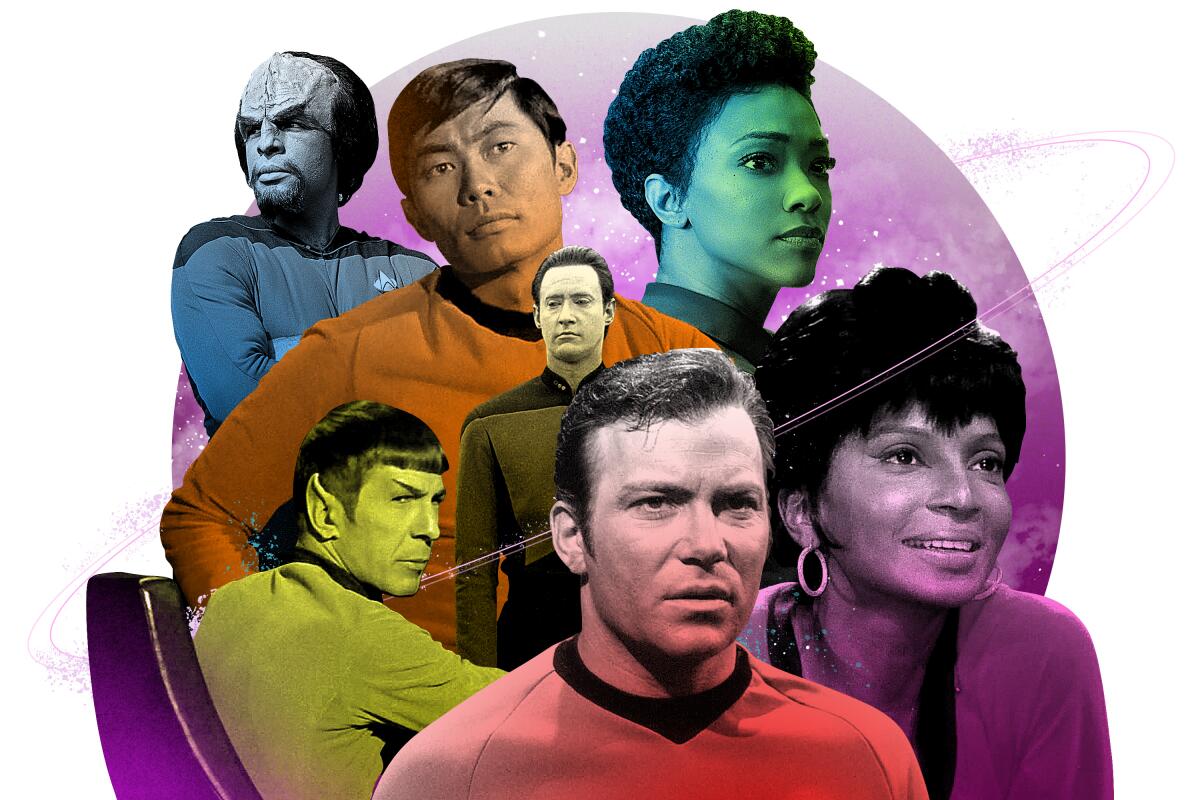
- Show more sharing options
- Copy Link URL Copied!
Of all the science fiction franchises in the known universe, the one I would take to a desert island — or planet, I guess — is “Star Trek.”
I am not a Trekkie by any means (not that there’s anything wrong with that). I have never dressed as a Vulcan. I can’t speak a word of Klingon or identify the starships by their silhouettes or tell you how many tribbles it takes to make trouble. But a lot of general knowledge has seeped into my brain over the years: “Beam me up, Scotty.” “Fascinating.” “He’s dead, Jim.” “I’m a doctor, not a [insert any other profession].” “Make it so.” “Engage.” I’m au fait with all those catchphrases. I’ve watched every series, if not in their entirety, and all of the movies . (I do not count the J.J. Abrams big screen reboots, which operate on another timeline, though I’ve seen those too.) And I have greeted each new iteration with interest and a certain “Hello, old friend, what are you up to now?” affection.
This year marks the centenary of creator Gene Roddenberry’s birth and 55 years since the premiere of what is now officially referred to as “The Original Series” or “TOS,” and there are various home video remasterings and reboxings available. Thursday sees the premiere of the excellent “Star Trek: Prodigy,” streaming on Paramount+, where the franchise is star-based. This new CGI series is about a bunch of misfit teenagers escaping a slave-labor camp in a stolen Federation starship, on the run from a very bad guy — but kind of joyriding too. (It’s being advertised as the first “Trek” series aimed at young audiences, somehow forgetting or reclassifying the early 1970s “Star Trek: The Animated Series,” which featured William Shatner, Leonard Nimoy and DeForest Kelley in their original roles as Kirk, Spock and McCoy, aired Saturday mornings, and won a Daytime Emmy as a “children’s series” in 1975.) None of the characters is human or in some cases even humanoid, apart from the hologram of Capt. Janeway (Kate Mulgrew), employed here as a kind of interactive help-bot. It is quite lively in terms of action, and funny where it’s supposed to be, but as in all “Star Trek” series and films, character is what counts most.
The complete guide to home viewing
Get Screen Gab for everything about the TV shows and streaming movies everyone’s talking about.
You may occasionally receive promotional content from the Los Angeles Times.
From the name forward, the franchise bears comparison with “Star Wars,” with its spaceships and aliens and interplanetary scope, not to mention the range of storytelling platforms — movies and TV, cartoons and comics, novels and fan fiction.
I wouldn’t deny that there’s fun to be had from George Lucas’ baby, now bouncing for Disney, but “Star Wars” is not science fiction. It’s a fantasy set in space, where wizards do magic and heroes fight with swords and prophesied chosen ones take up their lightsabers; a special effects western cum samurai film cum collection of war movies in which, a few defections notwithstanding, good fights bad until one obliterates the other; and an expensive homage to the cheap Saturday serials of the 1930s. Its one endlessly repeated theme is bad parenting — or, in the case of “The Mandalorian,” the first “Star Wars” live-action television series, good (surrogate) parenting . But “Star Wars” on the whole has no real interest in ideas, in asking “Why?” or “What if?” The droids are comic relief, and slaves. Joseph Campbell’s the Hero with a Thousand Faces has often been cited, by Lucas and others, to connect these characters to a deeper storytelling tradition; the problem with a thousand-faced hero, however, is that you have seen that shtick a thousand times.
“Star Trek” is a different animal. From the beginning it had a mission, not just to explore strange new worlds, seek out new life and new civilizations, and boldly go where no earthlings had gone before, but to model a future for its audience that was a little ahead of its time. Where “Star Wars” was slow off the mark with diversity — the only Black actor in “A New Hope,” James Earl Jones, supplied the voice of a white character, and even now has only managed one same-sex kiss between minor characters — “Star Trek” made diversity a point from the beginning, with George Takei’s Sulu and Nichelle Nichols ’ Uhura on the bridge. (Whether the 1968 kiss between Kirk and Uhura was the first interracial kiss on television is a subject of debate and semantics, but it was in any case ahead of its time.) The third series, “Star Trek: Deep Space Nine,” put a Black man (Avery Brooks’ Sisko) in charge; the next, “Star Trek: Voyager,” a woman (Mulgrew’s Janeway). Throughout the various series, and in the sci-fi tradition, contemporary earthly issues — racism, Cold War politics, environmental degradation, despotism, sexism — are seen through the lens of future, extraterrestrial exploits. The presence of aliens (also ethnically diverse), on the crew or just passing through, offered writers a chance to comment with distance on the puzzlements of human behavior.
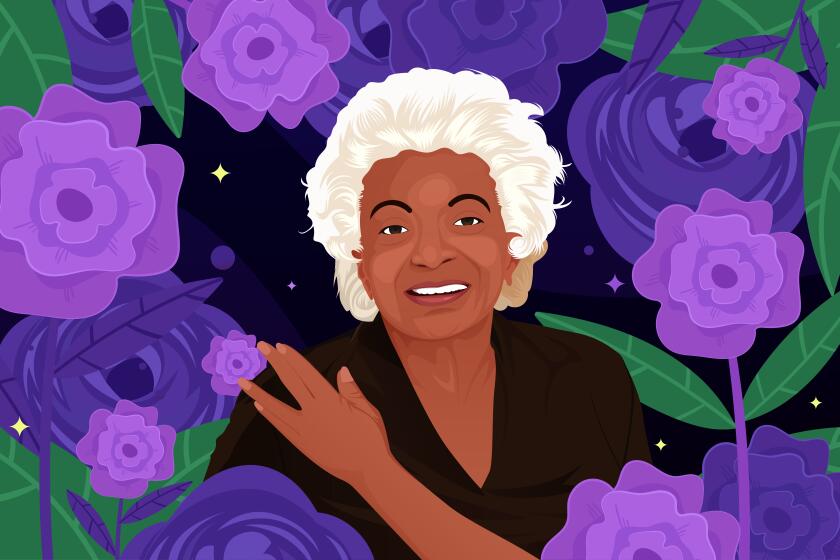
Entertainment & Arts

Inside the heartbreaking conservatorship battle of a ‘Star Trek’ legend
Nichelle Nichols, the beloved Lt. Uhura on ‘Star Trek,’ is living with dementia and struggling financially. Three parties fight to control her fate.
Aug. 15, 2021
That “Star Trek,” which originally ran from from 1966 to 1969, returned to television in the first place — there was a nearly 20-year break before “Star Trek: The Next Generation” — owes something to “Star Wars,” of course, which made space operas eminently bankable. But it had plenty of firepower of its own, charged by the the post-cancellation success of the original series, which flourished in syndication. A 1975 “Star Trek” convention in New York City, two years before “Star Wars” premiered, reportedly drew a crowd of 15,000 and turned thousands more away at the door; by 1986, the year before “The Next Generation” premiered, it was the most successful syndicated series going. A big-screen franchise, eventually numbering six films with the original crew, was up and running by 1979, followed by four “Next Generation” films — the first of which paired Shatner’s Kirk and Patrick Stewart’s Picard in a timeless corner of space.
To be sure, the revival of the brand may also be seen as a bottom-line event, designed to bring subscribers to what was then known as CBS All Access and is now called Paramount+, much as “The Mandalorian” was a boon to Disney+.
But it has produced excellent results. I’m a fan of all these shows: “Star Trek: Discovery,” especially in its adventuresome second and third seasons, with a fourth season premiering Nov. 18; the deep and thoughtful “Star Trek: Picard,” with Stewart back in the saddle (though going rogue); “Star Trek: Lower Decks,” an adult cartoon about service workers on a “second contact” vessel, that both parodies and celebrates the spirit and story conventions of the live-action shows while adding quotidian context and details. (We see how the ordinary crew lives; I can’t tell if it’s canonical, but it should be.) And there are more “Treks” arriving: the aforementioned “Prodigy”; “Star Trek: Strange New Worlds,” a spinoff at once from the second season of “Discovery” and the original “Star Trek” pilot, with Ethan Peck as a well-cast young Spock, Anson Mount as Capt. Christopher Pike and Rebecca Romijn as his Number One; and when one of the current series departs and other stars align, “Star Trek: Section 31,” another “Discovery” spinoff, with Michelle Yeoh reprising her role as Philippa Georgiou.

Because it was born and grew up on television, in an age when special effects were a luxury and not a given, the franchise has been devoted less to action than talk, and to philosophical questions — what it means to be human, or Vulcan, or Klingon, an android or noncorporeal. The fact that there are many, many, many hours of “Star Trek” content — which are, to some extent, preserved in the new series, with their intersecting plotlines — means that “Star Trek” has had the space to tell many sorts of stories: mystery stories, love stories (and impossible-love stories), funny stories, family stories, spy stories, horror stories, workplace stories. Much of the charm in the original series derives from the double act Shatner and Nimoy developed, based in a kind of affectionate mutual incompatibility, and subsequent “Treks” developed bonds between characters it is easy to invest in, and which in some cases (as with Capt. Picard and Data) became their very foundation.
It’s an emotional show, and not infrequently a show about having emotions — giving in to them, repressing them, making use of them. On the one hand you’ve got Spock, and all the Vulcans who came after, pumping for logic; on the other, there’s Data the android, a logical being who dearly wants to know what it is to be human, like his friends. It’s significant that the second series, “The Next Generation,” added a therapist to the crew — Marina Sirtis’ Deanna Troi — and eventually a bartender (Whoopi Goldberg as Guinan), which is to say, another sort of therapist.
The original series could be incredibly silly, unwittingly (and sometimes wittingly) self-parodying. The lack of money, one might say, was on the screen. One could practically smell the gray paint and plywood on the Enterprise sets. The series’ celebrated technobabble is just a kind of reformulated abracadabra; human characters get the hang of alien gear faster than you could look up how to reset your car’s clock in the owner’s manual. Everything happens in the nick of time. Kirk’s occasional romantic interludes might have seemed kind of hilarious even at the time, but certainly are risible now; and although there were strong roles written for women from the beginning, they were often stuck in some sort of minidress.
‘Star Trek’ was canceled 50 years ago. Now, the franchise is flying warp speed ahead
It was 50 years ago that “Star Trek” died.
May 9, 2019
And despite their hopeful tenor, these shows’ creation was not always peaceable. Roddenberry, whose involvement was lesser and greater over the years for reasons of health or business, could be critical of “Trek” made under others’ watch if he felt they weren’t staying true to his big themes. (Wikipedia will give you a pretty good idea of the rough roads some series and films have taken on the way to launch, and after.) But taken as a whole over time, “Star Trek” has remained remarkably true to a vision: Peace is better than war; violence is dramatically less interesting than discussion; difference is not merely respected but portrayed as a positive good.
There is the convention of the disposable crewman (“redshirts,” referring to the color of their uniform, has become a generic term for an anonymous character who dies early in a scene to indicate danger), but death even of the nameless is not usually paid back with death; revenge, while it is a motivating factor for characters in many stories, is regarded in the “Trek” universe as a dish best not served at all.
Mighty heroes mowing down hordes of literally faceless enemies, crowds cheering military victories — that is not the “Star Trek” style. There is relief when a foe is sent packing, but rarely glee. Phasers are usually set to stun. Spock’s Vulcan nerve pinch can send an opponent to the floor, but the Vulcan death grip (“The Enterprise Incident,” Season 3) is a fiction, a subterfuge. Current custom and affordable, high-quality modern SFX technology does mean that there is more space battling in the new “Treks” and more martial arts-style fighting (you are not going to leave Yeoh sitting in a chair, after all), but diplomacy remains the goal, and it is only when that fails that big things are blown up. “Get us out of here” is a thing Capt. Kirk would regularly say.

“Star Trek” envisions an Earth in which, as in John Lennon’s “Imagine,” the old dividing lines — ethnic, political, religious — have all disappeared; there is no war, no poverty, no pollution, and technology finally works for us rather than against us. Though these things seemed possible in the progressive era when “Star Trek” was born, I’ve grown increasingly doubtful about humanity’s ability to intelligently regulate its most local affairs, let alone join with alien species in a project of interplanetary goodwill.
Which may be why I love the “Star Trek” universe, and why I melt when, at the end of the third season of “Discovery” — a season very much about coming to terms with one’s nature and needs, limits and abilities — Sonequa Martin-Green’s (newly promoted) Capt. Burnham says, “The need to connect is at our core as sentient beings. It takes time effort and understanding … but if we work at it a miracle can happen.”
And who knows? The future is a long road.
More to Read

CNN Originals looks for a comeback after cuts with space shuttle Columbia series
April 6, 2024
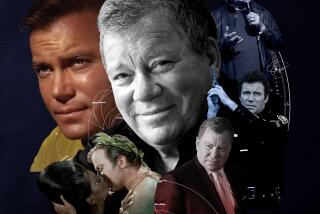
William Shatner has performed for decades, but he also loves horses and is designing a watch
March 12, 2024
‘Percy Jackson,’ ‘Avatar’ and epic coming-of-age tales are getting their live-action TV moment
Feb. 28, 2024

Robert Lloyd has been a Los Angeles Times television critic since 2003.
More From the Los Angeles Times

Grant Gustin, ‘The Flash’ cast mark superhero’s disappearance day, as teased in show’s pilot

Amy Duggar King hopes cousin Josh Duggar is feeling ‘torture’ while behind bars

Sophia Bush confirms relationship with Ashlyn Harris: ‘The universe had been conspiring for me’
April 25, 2024

Who is the real Martha from ‘Baby Reindeer’? Jessica Gunning says she didn’t need to know
10 Best ‘Star Trek’ Movies and TV Shows of the Franchise (So Far)
By Clayton Davis
Clayton Davis
Senior Awards Editor
- Emma Stone, Benny Safdie and Nathan Fielder Submit Multiple Emmy Bids With Drama Series ‘The Curse’ (EXCLUSIVE) 23 hours ago
- ‘The Walking Dead’ Emmy Plans: Spinoff ‘The Ones Who Live’ Submits for Limited Series, Danai Gurira Up for Both Acting and Writing 3 days ago
- Oscar Rules Updated for 2025 Awards: Original Score Shortlist Increased, Drive-In Theater Eligibility Removed and More 3 days ago

Captain James T. Kirk, better known around these parts as William Shatner, turns 90 years old on March 22. The actor, director, producer and writer has had a seven decade careers, with a community of devoted fans that revere not just his place as a figure in the universe but the entire canon of “Star Trek” and its various entities in film and television.
We’ve seen multiple starship captains and leaders over the decades, including Captain Jean-Luc Picard (Patrick Stewart), Philippa Georgiou (Michelle Yeoh), three Pikes (Jeffrey Hunter, Bruce Greenwood and Anson Mount), Jonathan Archer (Scott Bakula), Benjamin Sisko (Avery Brooks), a rebooted James T. Kirk (Chris Pine) and the ultimate badass Kathryn Janeway (Kate Mulgrew), arguably the best of them all.
The entire franchise has spawned seven spin-off television series, 13 feature films and two animated series. The original series ran from 1966 to 1969 on NBC and was canceled just after three seasons. After which, we moved to an animated series (1973-1974), “Star Trek: The Next Generation” (1987-1994), “Deep Space Nine” (1993-1999), “Voyager” (1995-2001). “Enterprise” (2001-2005), and the three still ongoing “Discovery” (2017), “Picard” (2020) and “Lower Decks” (2020).
In the film sector, the original series delivered six films — “The Motion Picture” (1979), “The Wrath of Khan” (1982), “The Search for Spock” (1984), “The Voyage Home” (1986), “The Final Frontier” (1989) and “The Undiscovered Country” (1991). “The Next Generation” provided four – “Generations” (1994), “First Contact” (1996), “Insurrection” (1998) and “Nemesis” (2002) while “The Kelvin Timeline” or rebooted version has given three “Star Trek” (2009), “Star Trek Into Darkness” (2013) and “Star Trek Beyond” (2016), with all three having the highest box-office grosses of any film in the whole franchise. The 2009 film is also the only one to win an Academy Award for best makeup (Barney Burman, Mindy Hall and Joel Harlow), along with “The Voyage Home,” garnering the most nominations at four.
There are still more in development under Paramount Plus and on the studio side. “Star Trek: Prodigy,” an animated series co-written and created by Dan Hageman and Kevin Hageman that focuses on a group of teenagers who get onto an abandoned starship, is set to drop later in 2021. From creators Akiva Goldsman, Alex Kurtzman and Jenny Lumet, “Star Trek: Strange New Worlds” is a spin-off of “Discovery” and a prequel to the original series, following Captain Christopher Pike (Ansel Mount) and the crew of the USS Enterprise. Rebecca Romijn and Ethan Peck will also reprise their roles as Number One and Spock. Still yet to be confirmed, there is reportedly a Khan Noonien Singh limited series on the table, which explores the storyline from “The Wrath of Khan,” tentatively titled “Ceti Alpha V.”
Live long and prosper, Mr. Shatner.
Check out the full ranked list.
Star Trek: First Contact (1996)

Released : November 22, 1996 Written by : Brannon Braga, Ronald D. Moore (screenplay by and story by) and Rick Berman (story by)
Cast : Patrick Stewart, Jonathan Frakes, Brent Spiner, LeVar Burton, Michael Dorn, Gates McFadden. Marina Sirtis, Alfre Woodard, James Cromwell, Alice Krige
Defining moments : “Jean-Luc blow up the damn ship” and Data saying “resistance is futile.”
“The Next Generation” struggled the most when translating from television to the big screen. Of the four features, “First Contact” was the most enjoyable, assembling interesting set pieces and a few memorable one-liners. Deservingly picking up an Oscar nomination for best makeup for Michael Westmore, Scott Wheeler and Jake Garber (losing to “The Nutty Professor”), it’s Jonathan Frakes’ (First Officer William T. Riker) first outing as a feature director. What makes the film a success is it abandons the notion that all roads have to involve James T. Kirk, which is one of the main reasons “Generations” really missteps.
Deep Space Nine (1993-1999)

Series run : January 1993 to June 1999 Created by : Rick Berman and Michael Piller
Cast : Avery Brooks, René Auberjonois, Terry Farrell, Cirroc Lofton, Colm Meaney, Armin Shimerman, Alexander Siddig, Nana Visitor, Michael Dorn, Nicole de Boer
Defining moments : Resistance with the Maquis, The Dominion War and The Mirror Universe
Commanding Officer and later Captain Benjamin Sisko (Brooks) was the best part of a series that wasn’t as consistently entertaining as its predecessors. Brooks is a grieving widower whose wife is killed by the Borg, an we follow him, along with his son Jake (Loft), and the rest of a fun crew that includes the Changeling Odo (Auberjonois), Medical Officer Julian Bashir (Siddig), Science Officer Jadzia Dax (Farrell), Operations Officer Miles O’Brien (Meaney) and a cult favorite Quark (Shimerman). The last two seasons of “The Next Generation” are set in the same years as the first two of “Deep Space Nine,” which then lines up with “Voyager” for the last five seasons.
Discovery (2019)

Series run : Premiered September 2017 (still running) Created by : Bryan Fuller and Alex Kurtzman
Cast : Sonequa Martin-Green, Doug Jones, Shazad Latif, Anthony Rapp, Mary Wiseman, Jason Isaacs, Wilson Cruz, Anson Mount, David Ajala, Rachael Ancheril
Defining moments : The betrayal of Lieutenant Commander Michael Burnham
This series is still finding its footing and has lots to proud of thus far. It’s the first of the franchise to focus on a First Officer rather than the Captain, taking place about ten years before the original series. In the universe, we typically see someone going against orders for the “greater good.” Still, this series has taken that premise and expanded it with Commander Michael Burnham (Green), leading a mutiny against Captain Phillipa Georgiou (Yeoh) and starting a war against the Klingons, leading to the death of her captain. That alone creates a new type of storytelling for the franchise to explore and could help pull in more viewers of Paramount Plus’ show. It won a Primetime Emmy Award last year for outstanding prosthetic makeup for a series, limited series, movie or special, the first for the show thus far.
The Undiscovered Country (1991)

Released : December 6, 1991 Written by : Nicholas Meyer, Denny Martin Flinn (screenplay by), Leonard Nimoy, Lawrence Konner, Mark Rosenthal (story by)
Cast : William Shatner, Leonard Nimoy, DeForest Kelley, James Doohan, Walter Koenig, Nichelle Nichols, George Takei, Kim Cattrall, David Warner, Christopher Plummer
Defining moments : The final sign-off (“If I were Human, I believe my response would be, go to hell…if I were you human.”)
The original series saga’s final installment in feature-length form is enjoyable, showcasing a possible peace between the Klingon Empire and the Federation until a secret agenda is revealed that puts all our favorite heroes at risk. It also marks the final group appearance of the major cast members of the original series, with the late Christopher Plummer as the one-eyed Klingon General Chang, who is having the time of his life. We also have a cameo appearance by Christian Slater, whose mother, Mary Jo Slater, was the film’s casting director. The film was ultimately nominated for two Oscars (best sound effects editing and makeup) and, at the time, was the highest opener for the franchise. Before “Avengers: Endgame,” a reminder that the moving closing credit signature sequence was delivered in “The Undiscovered Country.”
Star Trek: The Next Generation (1987-1994)

Series run : September 1987 to May 1994 Created by : Gene Roddenberry
Cast : Patrick Stewart, Jonathan Frakes, LeVar Burton. Denise Crosby, Michael Dorn, Gates McFadden, Marina Sirtis, Brent Spiner, Wil Wheaton
Defining moments : Tasha Yar’s death in episode “Skin of Evil”
The evolution of “Star Trek” was helped immensely by “The Next Generation,” which delivers the classically trained Patrick Stewart as Jean-Luc Picard, with one of the entire franchise’s best crews. Sleeker, with more interesting characters (admittedly not as well explored as they could have been), the show also encompasses one of the most notable deaths of any of the television outings with Tasha Yar (played by Denise Crosby). In the 23rd episode of the first season, we’ve already grown a connection to the Enterprise-D crew. With a behind-the-scenes request by Crosby to be removed from her contract, the act gave us one of the most emotional episodes of the franchise. Also…the creature Armus is TERRIFYING.
The Search for Spock (1984)

Released : June 1, 1984 Written by : Harve Bennett
Cast : William Shatner, DeForest Kelley, James Doohan, George Takei, Walter Koenig, Nichelle Nichols, Merritt Butrick, Christopher Lloyd
Defining moments : Spock’s “death.”
Let the great debate begin. Before #FilmTwitter quarreled about the merits of “Star Wars: The Last Jedi” (spoiler alert: it’s the second-best of the entire franchise), there was a discussion on the qualities of the third installment of the Kirk saga. It was a huge sequel weekend in June 1984, as it opened against the second weekend of “Indiana Jones and the Temple of Doom” and the fourth week of “The Natural,” emerging victorious. It also marks the directorial debut of Leonard Nimoy, who was the first cast member ever to helm one of its films. The visual effects are really where the movie comes alive, showcasing beautiful sequences developed by Industrial Light & Magic. What the film does is give heft and agency to the friendship between Kirk and Spock, and although the death of Kirk’s son is done haphazardly, the action sequences are pulse-pounding.
Voyager (1995-2001)

Series run : January 1995 to May 2001 Created by : Rick Berman, Michael Piller, Jeri Taylor
Cast : Kate Mulgrew, Robert Beltran, Roxann Dawson, Jennifer Lien, Robert Duncan McNeill, Ethan Phillips, Robert Picardo, Tim Russ, Garrett Wang, Jeri Ryan
Defining moments : “Same to you old friend” from “Year of Hell” episode with Janeway and Tuvok
Nostalgia and purists will say that the original “Star Trek” is the best because without that, we don’t have anything else that follows. While correct, in terms of quality, acting, and sheer audacity of the canon, “Voyager,” is behind-the-scenes, the best of them all. Kate Mulgrew’s Captain Janeway is vivacious, and she’s undoubtedly one of the best actresses to grace our screens (as also seen in Netflix’s “Orange Is the New Black”) and Tuvok (played brilliantly by Tim Russ) is simply amazing. Also, “Seven of Nine” was my everything in my childhood, leading into my teenage years.
Star Trek: The Original Series (1966-1969)

Series run : September 1966 to June 1969 Created by : Gene Roddenberry
Cast : William Shatner, Leonard Nimoy, DeForest Kelley
Defining moments : “The Doomsday Machine”
You have to respect the origins of a franchise, and we should properly genuflect before the series that started it all. The entire cast goes for it, with little budget and strange scene constructions, but it has more highs than it does lows, featuring numerous memorable moments. Many will say that the defining episodes of the series fall somewhere between “City on the Edge Forever” (with the death of Edith Keeler) or the Kirk and Spock battle in “Amok Time” (thanks to “The Cable Guy” with Jim Carrey), but “The Doomsday Machine” has the most tension and an outstanding turn from guest star William Windom as Commodore Matt Decker.
The Wrath of Khan (1982)

Released : June 4, 1982 Written by : Jack B. Sowards (screenplay and story by) Harve Bennett (story by)
Cast : William Shatner, Leonard Nimoy, DeForest Kelley, James Doohan, Walter Koenig, George Takei, Nichelle Nichols, Bibi Besch, Merritt Butrick, Paul Winfield, Kirstie Alley, Ricardo Montalbán
Defining moments : Spock’s “death”
If “Skin of Evil” defines the emotions on television, then “The Wrath of Khan” represents the silver screen for the franchise property. Our favorite Vulcan’s self-sacrifice, paired with Kirk’s eulogizing friend, is a tough one to stomach. It obviously is undone with the next entries of the cinematic universe, but it holds up immensely as a moving tribute to a beloved character. Sadly, no major awards love came for the film, which in many circles stands as the best in the franchise. Add the bombastic score of James Horner, and you receive amazing results.
Star Trek (2009)

Released : May 8, 2009 Written by : Roberto Orci, Alex Kurtzman
Cast : John Cho, Ben Cross, Bruce Greenwood, Simon Pegg, Chris Pine, Zachary Quinto, Winona Ryder, Zoe Saldana, Karl Urban, Anton Yelchin, Eric Bana, Leonard Nimoy, Chris Hemsworth
Defining moments : The final battle (“Fire everything!”)
Let’s get this out of the way nice and early.
Star Trek” (2009) received four Oscar nominations – for sound mixing, sound editing, visual effects, and makeup, which it won – it’s the one film of the franchise that should have been nominated for best picture, especially in the first year of a guaranteed 10 films for the Academy’s top category. I would also put it on a ballot for adapted screenplay and film editing. You don’t get an action-packed film like this rebooted entry that focuses beautifully on the beloved characters’ origin stories, giving them alternate timelines that don’t feel forced and still capture the spirit of what makes the franchise so great. SAG Awards should have also jotted it down for best cast ensemble. While the sequels have never recaptured that early magic, J.J. Abrams has proven he knows how to set up a story arc properly (sticking the landing is still up for debate). I only hope as Paramount Plus progresses forward in the universe, they take plays from the Kevin Feige playbook and give themselves a long roadmap that will pay off to something truly extraordinary.
More From Our Brands
Trump denied bid for new trial in e. jean carroll defamation case, bang & olufsen’s iconic 1990s cd player has a new ultra-limited remake, nfl stadium naming rights help brands half the time, study says, be tough on dirt but gentle on your body with the best soaps for sensitive skin, nbc midseason schedule: this is us farewell run, renee zellweger’s pam, blacklist makes way for l&o revival, verify it's you, please log in.
- The Inventory
Deep Space Nine Is Star Trek 's Best World, Because It's the Real World
When Star Trek fans fight about the best Trek show, nine times out of 10 they’re arguing about the original series versus The Next Generation . Obviously, both shows are excellent and fundamental to the franchise, but they aren’t the best Trek ever put on television. I believe that honor belongs to Deep Space Nine , and praise the prophets, do I love it.
Related Content
Yesterday, both Katharine and Rob talked about Star Trek ’s inherent optimism and hope. But in those previous series, that often meant characters would land on a planet, deal with a problem, and move on to the next location. But even in a future as bright as the one promised by Star Trek, Deep Space Nine knew that not everything would be—or even could be—perfect.
Deep Space Nine took the world—er, universe—established in the previous shows and opened it up to all the longstanding complexities that would come with it. We got to see how these different species groups lived and worked together over a long period of time. We saw amazing friendships and bitter rivalries developing side-by-side. (It’s why having the show take place on a space station made so much sense.) And while the Federation was still as bright-eyed and bushy-tailed as ever, dedicated to making the universe a more peaceful, prosperous place, we also got to see that not everyone has the same idea of what’s best, especially when it came down to different species. Sometimes it went hand-in-hand with humanity’s mission, other times it was completely the opposite. But we had a great crew that knew the value of compromise.
For example, in Star Trek: First Contact , Picard tells Lily that there’s no money in the future because people work to better themselves. However, that’s only true for humanity. For many aliens, there’s Gold Pressed Latinum. It may not be used by humans, but it’s almost sacred to other species. For the Ferengi, money is how they better themselves.
In the first episode, we see Commander Sisko utilize Quark’s Ferengian principles in order to keep him working on the space station. He even got the blessing of the Grand Nagus when he needed Quark’s help to find the Founders. And he did that through respect for the customs that his own society didn’t uphold. Sisko’s strength was in his ability to juggle the needs of all those on his station, of finding the best solution for the greatest amount of people, while knowing that not everyone would be or could be satisfied.
Star Trek ’s utopia may be great for humans, but it’s not always great for everyone else. Deep Space Nine recognized that. Differences in ideology lead to problems. In the case of the Dominion, it led to war. That’s because perfection is impossible. Deep Space Nine was strong because it shows the cracks in a utopian dream—idealism only goes so far, and everybody’s version of a perfect world will inevitably conflict.
But ths doesn’t mean Deep Space Nine is the “darker Star Trek ” (I really hate when people call it that). The show has a lot of heart, and a great deal of humor. We saw an entire episode where our heroes got stuck in the most stupid game in the universe . They put a bomb in a Tribble. A bomb in a Tribble .
And let’s not forget that Commander Sisko used the power of his words, not his weapons, to convey humanity, love, even the concept of linear time to a group of aliens called the Prophets. Deep Space Nine was, in its way, just as hopeful as the original series or The Next Generation —it just didn’t hide how much work it would be to achieve that future, and how difficult it would be.
Likewise, Sisko was the first Star Trek captain who wasn’t afraid to show his flaws, often to his own detriment. He was a man who was kind and clever, but made irrational decisions when he was angry or scared. He was even complicit in the murder of a senator to convince the Romulans to fight against the Dominion. Like many captains, he was forced to make questionable decisions that blurred the lines between right and wrong; Sisko simply had to make them a lot more often.
We also got our first (and I’d argue only good) portrayal of religion in the franchise. The Cardassian/Bajoran conflict was something that was first introduced in The Next Generation , but Deep Space Nine was what gave it flight. Religion was never much of topic on Star Trek before Deep Space Nine , largely because Roddenberry was an atheist, but I think the Bajorans were an excellent introduction.
The storyline taught religious tolerance and understanding. Sisko was a holy figure to these people, and even though he didn’t agree with their beliefs (at least at first), he still honored them to the best of his ability. At the end of Season 1, when Sisko’s son Jake asks him why Bajorans believe that the wormhole is something sacred when it’s clearly not, Sisko teaches him about the value of compassion and respect to differing faiths. It’s a powerful lesson that still echoes today.
It also showed what happens when religion and politics collide. Throughout their decades of slavery, the only thing that kept the Bajorans going was their faith. Once they were free, their faith fell to infighting, because they were no longer unified against a common enemy. Sects succumbed to religious extremism- to the point where members were committing acts of terrorism, like when Neela blew up the station school in “In the Hands of the Prophets” because it wasn’t teaching what amounted to Bajoran Creationism. But Sisko didn’t let fear and intimidation take over, he continued to embrace his Bajoran allies. Utopia doesn’t always work, but love does.
The biggest message at the end of the day for Deep Space Nine is there are no easy endings. Our heroes don’t conclude their journey playing a friendly game of poker, they’re forced to sacrifice almost everything they have in order to try and make the universe a better place. Because that’s what you have to do in the real world.
But if that doesn’t convince you, all I can say is: Morn. Case closed.
Advertisement
- Tickets & Showtimes
- Trending on RT

TAGGED AS: CBS , CBS All Access , Sci-Fi , science fiction

(Photo by Paramount+/CBS)
Star Trek TV Shows Ranked by Tomatometer
Updated: September 8, 2023
The Star Trek universe kicked off in 1966 with the original series , created by science fiction visionary Gene Roddenberry , and later exploded into a massive film and TV juggernaut.
While the original series, which starred William Shatner as Captain James T. Kirk and Leonard Nimoy as Mr. Spock, saw only three seasons, it made an indelible impression on the sci-fi genre. Live-action TV follow-up Star Trek: The Next Generation , with Patrick Stewart as Captain Jean-Luc Picard leading an ensemble cast, captivated viewers from 1987–1994 and inspired three more series that would air within the next decade: Star Trek: Deep Space Nine , Star Trek: Voyager , and Star Trek: Enterprise .
Starting with 1979’s Star Trek: The Motion Picture , Paramount Pictures has been regularly cranking out Trek films with the original series and Next Generation casts, as well as a rebooted version in 2009 with Chris Pine as Starfleet Academy cadet James Kirk and Zachary Quinto as young Spock. ( See the Star Trek films ranked here. )
In 2017, Trek returned to small screens with season 1 of CBS All Access streaming title Star Trek: Discovery , set during a tumultuous wartime era about a decade before the original and starring Sonequa Martin-Green . The new series marked a TV franchise reboot by Alex Kurtzman , writer on the 2009 Star Trek film and its sequel Star Trek Into Darkness .
RELATED: All Star Trek Movies Ranked by Tomatometer
The year 2020 gave fans a celebration of one of its most iconic characters with the premiere of Star Trek: Picard and Stewart reprising his role in the new streaming series that launched its second season in 2022. New live-action series Star Trek: Strange New Worlds was also released in 2022, and its first season was quickly Certified Fresh with a 100% Tomatometer score (it has since dropped to 99% on one review). The show’s second season, released in 2023, was nearly as well received and is Certified Fresh at 97% on the Tomatometer.
The TV franchise has since introduced two animated series Star Trek: Lower Decks , about the misfit support crew on one of Starfleet’s least-important ships, and kid-friendly Star Trek: Prodigy , which tells the story of a diverse group of teens who inadvertently become the crew of a prize starship and learn important lessons in their subsequent adventures. The latter series — No. 3 on our list below — has since been canceled by Paramount+, but a petition to save the show has gathered over 33,000 signatures.
Have a look below to find out which series score highest with critics in our Trek TV by Tomatometer list.
Disagree with the results? Tell us in the comments which series you think should have been ranked higher (or lower).
Star Trek: Strange New Worlds (2022) 98%
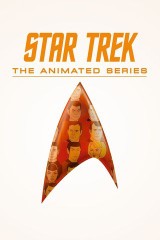
Star Trek: The Animated Series (1973) 94%
Star Trek: Prodigy (2021) 94%
Star Trek: Lower Decks (2020) 92%
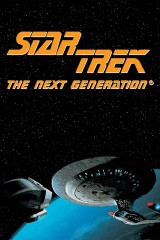
Star Trek: The Next Generation (1987) 92%
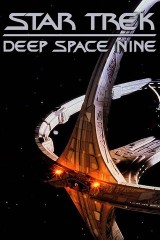
Star Trek: Deep Space Nine (1993) 91%
Star Trek: Picard (2020) 89%
Star Trek: Discovery (2017) 85%
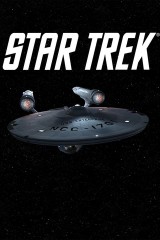
Star Trek (1966) 80%
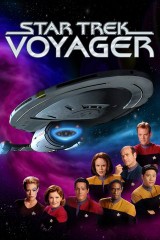
Star Trek: Voyager (1995) 76%
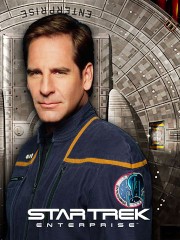
Star Trek: Enterprise (2001) 56%
Related News
TV Premiere Dates 2024
Fallout : What to Expect in Season 2
Fallout : What It Gets Right, and What It Gets Wrong
More Movie & TV Scorecards
The Best TV Seasons Certified Fresh at 100%
Marvel TV Ranked by Tomatometer
Best Actor Oscar-Winning Movies, Ranked by Tomatometer
Movie & TV News
Featured on rt.
DC Animated Movies In Order: How to Watch 54 Original and Universe Films
April 23, 2024
April 22, 2024
Weekend Box Office Results: Civil War Earns Second Victory in a Row
25 Most Popular TV Shows Right Now: What to Watch on Streaming
Top Headlines
- DC Animated Movies In Order: How to Watch 54 Original and Universe Films –
- The Best TV Seasons Certified Fresh at 100% –
- Best TV Shows of 2024: Best New Series to Watch Now –
- 25 Most Popular TV Shows Right Now: What to Watch on Streaming –
- 30 Most Popular Movies Right Now: What to Watch In Theaters and Streaming –
- Box Office 2024: Top 10 Movies of the Year –

- Information
- Goals and objectives
- Corporate Profile
- Company projects
- Business marathon
- Agency comission
- Personal income from the programs
- Trade comission
- Loyalty program
- Life Future
- Perfect Holiday
- Industrial Pro
- Polyglot Dream
Screen Rant
The best star trek series, ranked (according to imdb).
Totalling up the various views of diehard Trekkers and general viewers and fans alike, here are the best Star Trek series to date, according to IMDb.
With a long and successful career as one of the most popular franchises in television and film history, Star Trek has experienced a renaissance in recent years, due to the success of new series like Discovery and Picard .
RELATED: Star Trek Characters, Ranked Least To Most Likely To Win The Hunger Games
This success has spurred more Trek series to be developed for the small screen, including the Captain Pike-era centered Strange New Worlds and the Michelle Yeoh Discovery spinoff revolving around the mysterious shadow organization known as Section 31. With adherents and detractors amongst diehard Trekkers and general viewers alike, here are the best Star Trek series to date, according to IMDb.
Lower Decks - IMDb Rating: 6.9
Star Trek: Lower Decks is notable in that it is the second Trek animated series to air since the 1970s and the focus of its narrative is not on captains or high-ranking officers, but junior and low-ranking officers. The adult-oriented cartoon also takes place in the TNG -era on a relatively unimportant ship in the Federation fleet, the USS Cerritos .
RELATED: Star Trek: Lower Decks - 10 References You Totally Missed
Ensigns Beckett Mariner, Brad Boimler , and D'Vana Tendi provide humor as they navigate mundane careers in Starfleet, occasionally crossing paths with notable Star Trek characters like William Riker and Q.
Discovery - IMDb Rating: 7.2
Discovery ’s premiere in 2017 marked the end of a long period in which Star Trek was absent from television, arguably the medium that bests suits it. The show quickly established itself as different than previous iterations of Trek , with a serialized approach to its narrative and a focus on darker themes.
Rather than center upon a captain as its main character, like the Trek series that had come before it, Discovery revolves around Michael Burnham , a disgraced first officer. There’s no denying Discovery has breathed new life into the Star Trek franchise.
The Animated Series - IMDb Rating: 7.4
When the original Star Trek series went off the air in 1969, fans all over the world commiserated. Yet the popularity of the show would not die, and the show’s creator, Gene Roddenberry, decided to continue the adventures of Captain Kirk and the intrepid crew of the Enterprise in an animated format.
As a direct sequel, the show featured the return of the entire original cast in the voices of the roles they made famous and featured many popular secondary characters and settings from the live-action series. Due to the freedom an animated series could afford producers in depicting alien life forms, many new characters also made their debut on this show.
Enterprise - IMDb Rating: 7.5
Named after the most famous ship in the Star Trek universe, Star Trek: Enterprise was the earliest Star Trek series in terms of chronology, taking place shortly after First Contact and before the creation of the Federation.
RELATED: Star Trek: 10 Biggest Technological Advancements Of The Enterprise Ships
The galaxy Captain Archer and the crew of the NX-01 Enterprise found themselves in was definitely bigger, less familiar, and less technologically advanced than what viewers had come to expect from a Trek series, but they definitely made due. Though not as beloved as previous Trek shows, Enterprise forged its own unique path as a prequel series.
Picard - IMDb Rating: 7.5
Picard picks up years after the final Next Generation film Nemesis and sees the legendary captain retired on his family winery in France. Viewers are quickly brought to speed as to recent events: a supernova has destroyed the Romulan homeworld, and an attack on the shipyards on Mars by rogue synthetics crippled the Federation’s relief efforts.
Haunted both by his failure to save the Romulan survivors and the death of his friend Data, Picard comes out of retirement to fight for the rights of synthetic lifeforms all across the Federation.
Voyager - IMDb Rating: 7.8
Boasting the first female captain in a lead role for a Star Trek series , Voyager had an interesting premise: the ship would be manned by a crew combined of Starfleet officers and Maquis fighters and would be catapulted to the Delta Quadrant, 70 000 light-years away from Earth.
The show didn’t disappoint on narrative tension, as the crew learned to accept each other’s differences and encountered new civilizations and stellar phenomenon. Midway through the show’s run, the crew even rehabilitated a Borg drone and made her part of the crew--no easy feat for any captain!
Deep Space Nine - IMDb Rating: 8.0
When Deep Space Nine premiered in 1993, it stood out as being the only Star Trek spin-off to take place entirely on a space station. The series took about two seasons to find its footing, and really picked up the narrative pace when it introduced the empire on the other end of the wormhole, the Dominion. With their Jem’Hadar shock troops, the Dominion wreaked havoc on the Alpha Quadrant for four seasons.
RELATED: Star Trek: 10 Hidden Details About The Main Characters of DS9
Often considered the “black sheep” of the Star Trek universe for showcasing darker themes and morally ambiguous characters that purists believed were not conversant with Gene Roddenberry’s utopian vision, Deep Space Nine was nevertheless a compellingly thought-provoking and worthy entry into Star Trek canon.
The Original Series - IMDb Rating: 8.3
The series that started it all, Star Trek premiered in 1966 and differed from other science fiction shows significantly. Rather than depict a dystopian wasteland as a future, it showcased humanity’s ability to overcome its lesser instincts and conquer its predilection for things like war and disease. Traveling the stars in search of new worlds and new civilizations as part of a galactic Federation dedicated to knowledge and peace appealed to an audience desperate for hope in the face of the Cold War and civil unrest.
Built on the interplay between the passionate Dr. McCoy , coldly logical Mr. Spock , and unflappable Captain James T. Kirk , this series was the template for all other Star Trek series to come.

The Next Generation - IMDb Rating: 8.6
Considering the reverence accorded the original series, starting a whole new show with none of the original actors was a huge gamble when Paramount launched Star Trek: The Next Generation in 1987. However, the show quickly found its footing and a loyal viewership after an uneven first season.
Stewarded by the diplomatic yet decisive Captain Jean-Luc Picard, the series introduced new characters, worlds, and alien races to the Star Trek universe and plumbed narrative depths that were rewarding to watch . The show fulfilled creator Gene Roddenberry’s vision of a utopian future and is arguably the best Star Trek series to date.
NEXT: Star Trek: 10 Scenes That Make Viewers Nervous When Rewatching
- Cast & crew
- User reviews
Star Trek: The Next Generation

Set almost 100 years after Captain Kirk's 5-year mission, a new generation of Starfleet officers sets off in the U.S.S. Enterprise-D on its own mission to go where no one has gone before. Set almost 100 years after Captain Kirk's 5-year mission, a new generation of Starfleet officers sets off in the U.S.S. Enterprise-D on its own mission to go where no one has gone before. Set almost 100 years after Captain Kirk's 5-year mission, a new generation of Starfleet officers sets off in the U.S.S. Enterprise-D on its own mission to go where no one has gone before.
- Gene Roddenberry
- Patrick Stewart
- Brent Spiner
- Jonathan Frakes
- 320 User reviews
- 162 Critic reviews
- 39 wins & 61 nominations total
Episodes 176

Photos 3429

- Captain Jean-Luc Picard …

- Lieutenant Commander Data …

- Commander William Thomas 'Will' Riker …

- Lieutenant Commander Geordi La Forge …

- Counselor Deanna Troi

- Lieutenant Worf …

- Doctor Beverly Crusher …

- Enterprise Computer …

- Wesley Crusher …

- Chief Miles O'Brien …
- Youngblood …

- Lieutenant Natasha 'Tasha' Yar …

- Doctor Katherine Pulaski …

- Nurse Alyssa Ogawa …

- Ansata Terrorist …

- Ensign Ro Laren …

- Keiko O'Brien …
- All cast & crew
- Production, box office & more at IMDbPro
Stellar Photos From the "Star Trek" TV Universe

More like this

Did you know
- Trivia Almost everyone in the cast became life-long friends. At LeVar Burton 's 1992 wedding, Brent Spiner served as best man, and Sir Patrick Stewart , Jonathan Frakes , and Michael Dorn all served as ushers. Man of the People (1992) (#6.3) aired on that day.
- Goofs It is claimed that Data can't use contractions (Can't, Isn't, Don't, etc) yet there are several instances throughout the series where he does. One of the first such examples is heard in Encounter at Farpoint (1987) , where Data uses the word "Can't" while the Enterprise is being chased by Q's "ship".
[repeated line]
Capt. Picard : Engage!
- Crazy credits The model of the Enterprise used in the opening credits is so detailed, a tiny figure can be seen walking past a window just before the vessel jumps to warp speed.
- Alternate versions The first and last episodes were originally broadcast as two-hour TV movies, and were later re-edited into two one-hour episodes each. Both edits involved removing some scenes from each episode.
- Connections Edited into Reading Rainbow: The Bionic Bunny Show (1988)
User reviews 320
- Dec 8, 2002
Exceptional Robots on Film & TV

- How many seasons does Star Trek: The Next Generation have? Powered by Alexa
- Who is the captain of the USS Enterprise?
- Did any cast members of the original Star Trek series appear in The Next Generation?
- September 26, 1987 (United States)
- United States
- Official Facebook
- Official site
- Star Trek: TNG
- Donald C. Tillman Water Reclamation Plant - 6100 Woodley Avenue, Van Nuys, Los Angeles, California, USA (location)
- Paramount Television
- See more company credits at IMDbPro
Technical specs
- Runtime 45 minutes
- Dolby Stereo
Related news
Contribute to this page.
- IMDb Answers: Help fill gaps in our data
- Learn more about contributing
More to explore

Recently viewed
- Search Please fill out this field.
- Newsletters
- Sweepstakes
The best Star Trek series, ranked
Ready to settle in and watch some Star Trek episodes? Since there are so many, we’ve ranked all of the different series to help you get started on your quest.
Star Trek is one of the greatest franchises ever created. If you're new to the world of transporters and holodecks, you have so much wonderful content to catch up on — of course, some would say too much content.
Since there are over 850 episodes and counting (all of which you can stream on Paramount+ ), watching all of Star Trek can be more difficult than fighting a Gorn in the desert. To make things easier for you to get started, we've ranked every series (besides the short-form series Short Treks ) of this long-running franchise. Some of these choices were a bit daunting to play favorites with, but, like Jim Kirk, there's no belief in the no-win scenario.
Without further ado, here's our list of every Star Trek series ranked from worst to best.
11. Star Trek: Picard (2020–2023)
Star Trek: Picard was meant to be like comfort food to fans of Star Trek: The Next Generation . And whether fans were turned off by the changes in franchise direction with shows like Discovery or just wanted to see Patrick Stewart back in action, Paramount clearly thought this show would be almost universally beloved.
That didn't happen . The warm and fuzzy feeling of seeing a few familiar faces in the first season evaporated because of an often-confusing plot about androids. The second season continued this confusion with a time-travel story that often bordered on incoherence. While many Star Trek shows take a few seasons to hit their stride, it was shocking that so much of this relatively short series was seemingly created with "make it so-so" in mind.
10. Star Trek: The Animated Series (1973–1974)
If you're in the right mood (or you've been sipping on some Saurian brandy), Star Trek: The Animated Series has some wacky entertainment value. Any given episode had the writers throwing in stories like a giant version of a beloved character. And the animators threw some fun curveballs, including making the embodiment of evil into a shirtless hottie that would make even shirtless Kirk jealous.
However, this animated show was often caught between two very different worlds. It wasn't fully a return to the (relatively) grounded exploration of space, science, and morality of The Original Series . And it didn't fully lean into the chaotic possibilities of a cartoon world (something Lower Decks would later handle much better). So, while more and more elements of The Animated Series have become canonical thanks to shows like Discovery , and it's fun to hear the voice acting of the Original Series cast, this cartoon is one that all but the most hardcore fans can skip.
9. Star Trek: Enterprise (2001–2005)
Despite what you might have heard, Star Trek: Enterprise is not a bad show. It just didn't start as a very good show. The series was tragically canceled after the fourth season, which was arguably when it had just begun to hit its stride (thanks in part to longer story arcs and a really fun glimpse into Trek 's popular Mirror Universe).
At the end of the day, Enterprise is a show best enjoyed by Star Trek fans that like to pore over the Memory Alpha wiki and familiarize themselves with Trek minutiae. As a prequel show, it laid the groundwork for everything from Starfleet policy to alien interactions that other shows explore in more detail. If you don't have a shot at winning any Star Trek trivia contests at your local bar, it's still worth watching how captivating Scott Bakula can be in the captain's seat.
8. Star Trek: Prodigy (2021–present)
Star Trek: Prodigy was very difficult to rank. Unlike the other two Trek cartoons, this series was explicitly designed for younger audiences. Paramount clearly wants to use this show as a gateway for these younger fans to explore the wider world of Star Trek , but there are enough elements (most notably the return of Kate Mulgrew , reprising her role as Captain Janeway via a holographic form) to keep veteran franchise fans invested.
Ultimately, your enjoyment of this series will be largely dependent on how much you enjoy animated/YA entertainment. If nothing else, you should check out the first two episodes of this show to see just how beautiful the CGI animation can get.
7. Star Trek: Discovery (2017–present)
If Enterprise is the Star Trek show cut off too soon, Discovery may very well be the first Star Trek show to outlive its welcome, though it will end after its fifth season . There are many things the show gets right, from nifty effects to quirky characters to amazing casting (seriously, Sonequa Martin-Green is electrifying whenever she is on screen).
The show veers from a disjointed-but-interesting first season to a mesmerizing second season, which gets a real shot in the arm by introducing Captain Pike (played by the inimitably charming Anson Mount ) and Spock (played as a perfect homage to Leonard Nimoy by Ethan Peck). Later seasons, however, prove that the series can't get away from galactic-level threats, and character drama begins overriding plot development enough that we want to slingshot around the sun and return this series to its earlier roots.
6. Star Trek: Voyager (1995–2001)
Like many Trek series, Star Trek: Voyager had a rocky beginning, and it was often overshadowed by the excellent Deep Space Nine . Ironically, Voyager dramatically improved with what could be a cynical casting stunt: adding the alluring Jeri Ryan (constantly wearing a catsuit, no less).
Though it really looked like a desperate ratings stunt, Ryan turned the reformed Borg Seven of Nine into the most interesting character on the show. And, despite their alleged clashes behind the scenes, the actress helped to elevate every scene she shared with Kate Mulgrew. Between the new cast member, improved writing, and Mulgrew being nothing short of a damned icon, Voyager soon became appointment television, and it's definitely worth binge-watching for modern audiences.
5. Star Trek: Lower Decks (2020–present)
Lower Decks is an impressive show for many reasons, including the fact that its execution elevates its initial premise, which focuses on the lives of the lower-level staffers aboard the starship. Because showrunner Mike McMahan previously wrote for Rick and Morty and the animation takes its cues from the cartoon adventures of Rick Sanchez, many fans may have assumed Lower Decks would simply be " Star Trek meets Rick and Morty ."
Thankfully, that's not the case. Aside from animation similarities, the main element these two cartoons have in common is a breakneck, borderline chaotic pace. But as entertaining as it can be, Rick and Morty is an often nihilistic show with gags revolving around how nothing really matters. Lower Decks , however, is a lighthearted series that serves as the cure to modern Trek . If you've dismissed other contemporary series such as Discovery and Picard because they are grim, violent, and serious, Lower Decks is a wonderfully lighthearted alternative that is never afraid to poke fun at its own franchise.
4. Star Trek: Strange New Worlds (2022–present)
Star Trek: Strange New Worlds is a truly pleasant surprise to fans of the franchise. Set years before Captain Kirk sat in that famous chair, we see Capt. Christopher Pike (Anson Mount reprising the role) lead the U.S.S. Enterprise into bizarre adventures alongside some familiar characters (Ethan Peck returning as Spock, for example) and a few new ones.
Part of what helps this show shine is that it marks a return to episodic Trek in that every installment is a self-contained adventure as opposed to other newer series like Discovery and Picard , which build entire seasons around a single plot. The characters all ooze with the same swashbuckling charm of The Original Series characters, and we can't wait to see more of their adventures. We also can't wait to see more of Anson Mount's amazing hair (arguably the most awesome practical effect in the franchise).
3. Star Trek: The Next Generation (1987–1994)
Star Trek: The Next Generation has the dubious honor of being the first Trek show where veteran fans warn against new fans starting at the very beginning. Early episodes ranged from stupidly horny (planetary inhabitants in the episode "Justice" were barely wearing scraps of clothing) to ridiculously racist ("Code of Honor" may very well be the worst Star Trek episode ever made). Many of these problems stemmed from the fact that despite being called "The Next Generation," the show was trying to recreate The Original Series (right down to using some of the same writers and shamelessly reusing scripts from the scrapped Star Trek: Phase II series).
As fans like to joke, the show got better as Commander Riker's beard got longer. Season 2 was a major improvement, which was then usurped by season 3, which brought in new uniforms, new sets, and Michael Piller to head up the writing team. Just like that, TNG embraced its differences from its famous forerunner (Picard was cerebral whereas Kirk was impulsive, Data yearned for emotion whereas Spock detested it, and so on). At last, the gamble paid off, and the next generation of this franchise ushered in the next generation of Star Trek fans.
2. Star Trek: The Original Series (1966–1969)
What can we say about The Original Series that hasn't been said already? Gene Roddenberry successfully fused science fiction with American pioneer spirit to create his vision of this " Wagon Train to the stars." The episodes were both fun and thought-provoking in equal measure, and William Shatner as Kirk and Leonard Nimoy as Spock, among many others, turned in performances that seared themselves into our collective pop culture consciousness.
The Original Series offered social commentary about racism, imperialism, and (often to Spock's annoyance) the human condition. And the blend of big acting, ambitious sets, and poignant plots helped this show become something truly transcendent. The OG Star Trek shaped not only the future of the franchise but television itself, and it's not hard to see why it continues to win over new generations of fans year after year.
1. Star Trek: Deep Space Nine (1993–1999)
Placing Star Trek: Deep Space Nine in the top spot is perhaps a contentious decision. However, this series did more than measure up to the quality of The Next Generation (a lofty feat in and of itself). The show also made a number of storytelling and production choices that have helped DS9 seem more relevant in recent years than ever before, including tackling issues about race, religious fundamentalism, and war on a regular basis.
Perhaps the main way DS9 feels so pertinent is that the show broke the longstanding Trek rule of making only standalone episodes. As the powers that be focused more on creating their next show, Voyager , DS9 showrunner Ira Steven Behr was able to get away with creating long story arcs and frequent episode callbacks. The end result of this is that Deep Space Nine is the first of the pre-streaming era Trek shows that is perfect for binge-watching.
Related content :
- Star Trek: Discovery reveals season 5 first look and on-set Easter eggs
- Jack Quaid formed a 'Spoimler' bromance with Ethan Peck on Star Trek crossover event
- Star Trek Day pays tribute to Uhura actress Nichelle Nichols in moving in memoriam
Related Articles
- The Inventory
Support Quartz
Fund next-gen business journalism with $10 a month
Free Newsletters
Here are all the technologies Star Trek accurately predicted
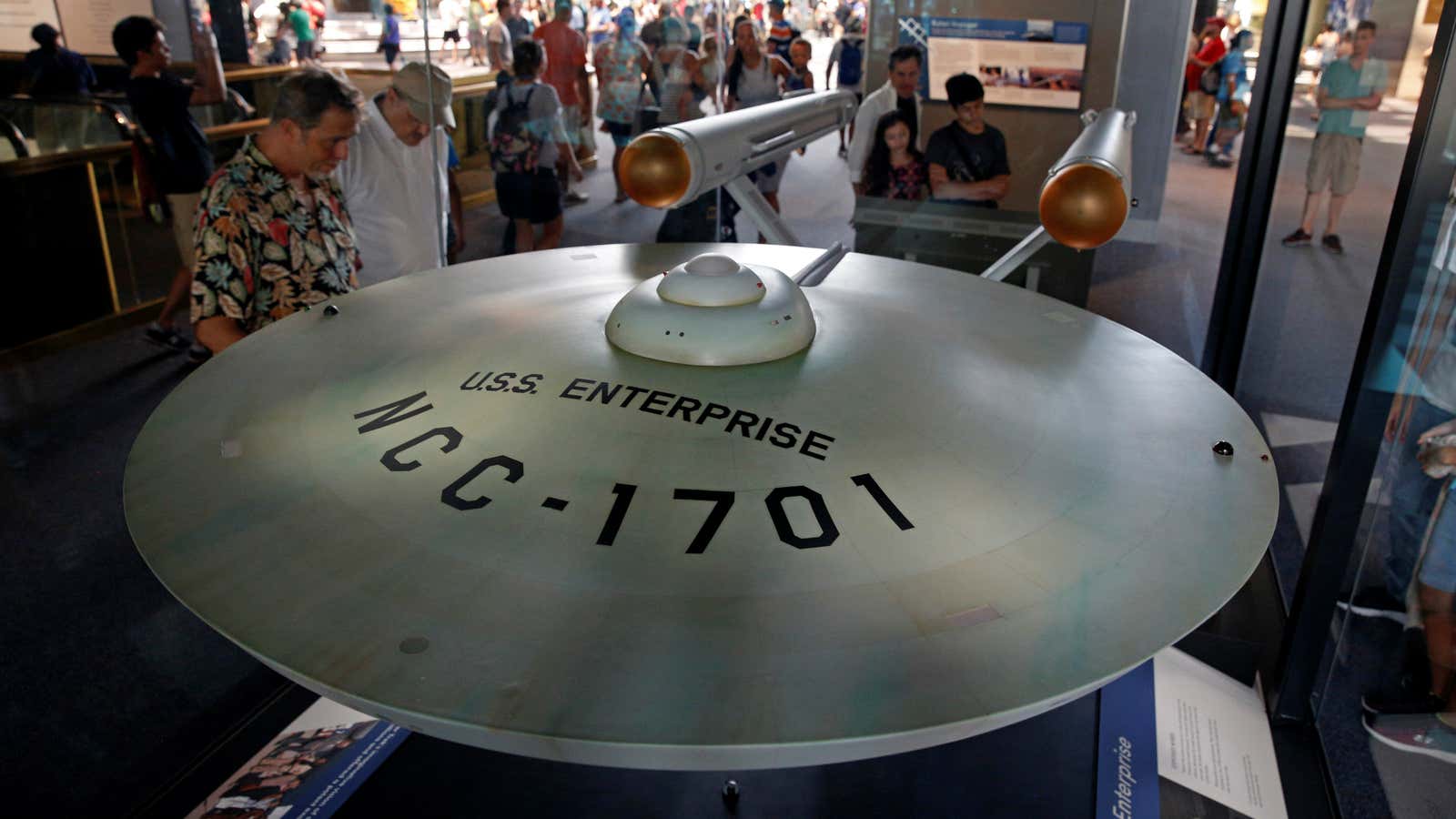
On September 8, 1966, NBC aired the first episode of a new TV series about a starship on a five year mission of space exploration. Today, Star Trek turns 50.
The first episode told of an endangered shape-shifting, salt-sucking alien posing as a human woman to lure prey to its lair. (The creature was killed rather than added to the red list ). Half a century, 726 episodes, four spin-off series ( a fifth is on its way), and 13 movies later, we’ve yet to meet any metamorphosing salt vampires in real life.
On the other hand, a surprising number of fanciful ideas and technologies that appeared on the show over the years have come to pass in the real world. Star Trek , it seems, is one of the great augurs of 21st century living.
Some technologies, like flip-phone communicators, are the fairly predictable result of fiction inspiring fact— Star Trek is a commonly cited influence for scientists. Others, like transparent aluminum, are things even Mr. Spock couldn’t have seen coming.
Here’s a list of all the real-world tech, presaged Star Trek , we could find:
- Tablet computers
- Tractor beams
- Tricorders (there’s also an X Prize for that)
- Flip communicators ( and wearable badge communicators )
- Replicators
- Cloaking devices
- Voice interface computers (hello Siri)
- Transparent aluminum
- Bluetooth headsets (Uhura had one first)
- Google Glass
- Portable memory (from floppy disks to USB sticks)
- Focused ultrasound technology
- Biometric data tracking for health and verifying identity
- Automatic doors
- Big screen displays
- Real-time universal translators
- Teleconferencing
- VISOR bionic eyes for the blind
- Diagnostic beds
There are a few technologies we’re still waiting for:
- Warp drives/matter-antimatter power
- Transporters (“Beam me up”)
- A moneyless society
- The Vulcan nerve pinch
Scientists, make it so.
📬 Sign up for the Daily Brief
Our free, fast, and fun briefing on the global economy, delivered every weekday morning.
Every Star Trek Series Ranked From Worst To Best
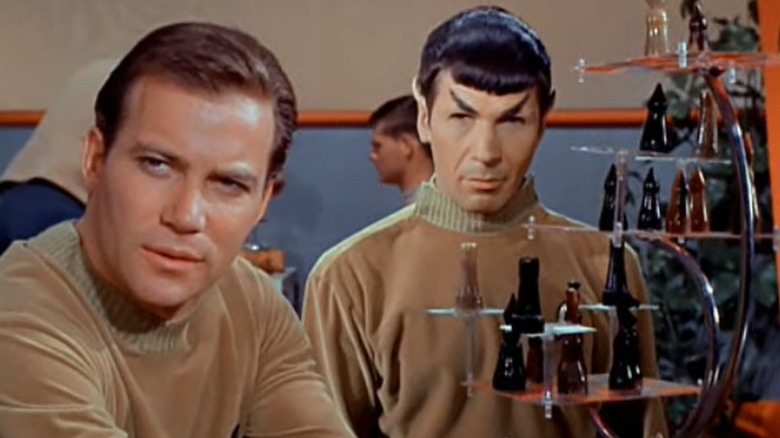
"Star Trek" is one of science fiction's big historical landmarks. It's the franchise that's inspired generations of scientists and engineers and gave Black girls and young Asian kids someone to look up to. It's a franchise about the courage it takes to explore the unknown, guided by a hopeful heart. The original series rarely shied away from tackling tough social issues, and it set about telling these stories with a ferocity that reminded us that we can always be better as a species. "Star Trek" reminds us that the bravery inside us isn't fiction and reaching out to explore will always be our brightest calling.
Since "Star Trek" premiered in 1966, there have been 13 films across multiple generations and timelines. More is on the way, with another J.J. Abrams-led film in preproduction , but for many fans, it's about the many TV series. They have the room to embody that spirit of hope and exploration — with 11 spinoffs to date. Little of "Trek" is objectively bad, but it can be divisive. This ranking is based on how the shows present the ideals of "Trek" and how well they accomplish some of the best things about the franchise.
11. Star Trek: Enterprise
"Enterprise" premiered in September 2001, four months after the USS Voyager and Trekkers were ready to return to the Alpha Quadrant. Captain Jonathan Archer, played by science fiction veteran Scott Bakula, was to helm the first Enterprise, NX-01, with its maiden launch pegged to 2151. Its two-part premiere, "Broken Bow," was set to be as mysterious and intriguing as "Encounter at Farpoint," introducing the Klingons in the canon chronology.
The trouble started as we were blown backward in our seats by the first "Star Trek" theme to have lyrics, "Faith of the Heart," a corny power ballad rebuilt from a Rod Stewart weepie that featured in one of Robin Williams' few bad films . The first season then limped its way through a mystery box time travel plot. Later seasons faced hurdles ranging from executive shakeup s to the abrupt introduction of the Xindi , a new threat that tried to refocus the show but just made things muddier. Canceled as production on Season 4 was wrapping up, the unkindest cut was a limp finale that trudges out William Riker in a desperate bid to appease the fans. The spirit of "Star Trek" lived in the "Enterprise" cast, but the execution did not do them justice.
10. Star Trek: Discovery
"Discovery" returns to the pre-Kirk era, with the crew of the USS Discovery beginning its mission of exploration in 2256. Originally helmed by Bryan Fuller , the diverse cast is a welcome sight, and their passion for exploring "Trek" isn't in doubt. The first couple of seasons are sometimes a grim slog, and for long-time fans desperate to explore new worlds, it may be tiresome to watch Spock's legacy get trotted out over and over again. Equally frustrating is the revelation that ties Spock (Ethan Peck) and Michael Burnham (Sonequa Martin-Green) together.
As time goes by, "Discovery" developed a rhythm of its own. It's hard to knock a series that's evolved as strongly as this one and has brought legendary director David Cronenberg on board as a recurring guest. Its newer story arcs put the crew of the Discovery in a distant, ruined future with mysteries that pay off. Further, the earlier interpersonal bumps receive enough explanation to satisfy our initial misgivings. Best of all for the future of "Trek" was the introduction of a new Christopher Pike. Anson Mount went on to rebuild this small but important character into someone sturdy enough to helm one of the most promising new "Treks" in decades.
9. Star Trek: Picard
It personally hurts me to place "Picard" this low on the list, but two things weigh it down. The first is the reminder of the way this series is a hot potato among some "Trek" fans, with the show's subreddit often engaging in heated debate after new episodes. The other is that "Picard" isn't so much a "Star Trek" series as it is a rich exploration of a single fan-favorite character. The galaxy is on standby as we travel alongside the sort-of retired Jean-Luc Picard as he explores the consequences of Starfleet's past actions and his own.
The first season allows a fresh look at the Romulans, giving them some of the same treatment Klingons earned under Captain Picard in the '90s. Whatever one may think of the Borg-heavy plot, that exploration is a definite highlight. The second season is a tough look at mortality and the cycle of abuse , guided by the welcome presence of John de Lancie as Q. It's rugged and sometimes messy storytelling, but the emotional journey is worth it. Nonetheless, it's not the strongest "Trek" entry based on the merits of Starfleet's ideals, and we have to accept that.
8. Star Trek: The Animated Series
Remarkable for the time with its kid-friendly but serious storytelling, "The Animated Series" is functionally a fourth season of the original "Star Trek." The animated medium allows for some new characters and fascinating new species to take the fore, with the Caitian M'Ress joining the command deck. Though the animation is sometimes flat with noticeably recycled elements, the scripts retain their quality under "Star Trek" veteran and executive producer D.C. Fontana. The results were good enough to win an Emmy in 1975 .
With the majority of the original cast returning, save for Walter Koenig despite Leonard Nimoy's best efforts , there's a lot of good "Trek" to be found under the hoary silliness. Some of these goofier storylines provide fodder for the teasing new series, "Lower Decks," especially the Walter Koenig-penned "The Infinite Vulcan" with its giant clone of Spock. It's not a bad story, but it is a wild ride to the edges of the franchise's believability. Nonetheless, the series is often an unexplored trove for classic fans who miss the old crew. Give this show a chance. It may surprise you.
7. Star Trek: Prodigy
We're only halfway through the first season of this delightful new show, and it's already a winner . With vibrant CGI animation showcasing its almost entirely alien cast of characters, it's a kid's show that understands that kids are way smarter, tougher, and more curious about the universe around us than we often realize. The return of Captain Janeway as an emergency guidance hologram doesn't overpower its cast of overwhelmed kids but instead provides the kind of support I wish all kids could have.
"Prodigy" mixes in a handful of anthological-style stories with a plot about a prison planet and its mysterious tyrant, the Vau N'Akat Diviner (John Noble). The planet's not above putting child slaves to hard labor, and they're overseen by Drednok (Jimmi Simpson), a robotic nightmare that reminds me that I watched "RoboCop" when I was way too young. The midway point leaves us nervous about the kids' first real encounter with Starfleet, but with the series already renewed , we can be assured there are going to be lots of new things for them to experience.
6. Star Trek: Lower Decks
We can make the case for "Lower Decks" as some of the very best new "Trek" the franchise has to offer. At the same time, the more "Trek" that you know and love, the better this show gets. This means that in terms of this list, it's a central pillar of the franchise, a sturdy construct that showcases so many of the things fans both love and sometimes find funny about "Star Trek."
With a tightly-paced 22-minute format that speed-runs the best of the "Next Generation" storytelling style, the lower decks of the USS Cerritos are a good place to ease new fans in. The Cerritos is a utility ship, meaning it's not glamorous enough to do the cool things flagships like the Enterprise do. Instead, we get a funny and often touching look at what it's like to just be some dude in Starfleet. As it turns out, that's far more important to Starfleet than we realize. The character dynamics are top-notch, and most important of all, "Lower Decks" is willing to take a look at the consequences of Starfleet's occasionally too-passive approach to new worlds and new civilizations.
5. Star Trek: Deep Space Nine
While the explorative angle of "Star Trek" is often pushed to the side by the immobile nature of the former Cardassian space station in orbit around Bajor, hope remains a feature of "Deep Space Nine," one of the oddest "Treks" to date. A little divisive at the time due to the major change of setting and its often somber nature, "Deep Space Nine" is a show that's aging better than that one Botox-loving relative you have to see every holiday.
"DS9" features a rock-solid cast willing and ready to explore the dark side of Starfleet's sunny utopia. The Bajoran star system feels like it's a universe away from the lush comforts of Risa and Betazed. A still-fragile world wears fresh scars under its new freedom, and even their faith is being undermined. Cardassians, the lizardlike species that nearly broke Captain Picard , remain a threat. As the series moves into longer story arcs with the rise of the Dominion, "Deep Space Nine" ensured it would forever be like no other "Trek." But that hope always lingers in the mysterious work of the Prophets, Chief O'Brien's unstoppable competency, and Kira Nerys' efforts to help uplift her people.
4. Star Trek: Voyager
Captain Kathryn Janeway was ahead of her time, embodying all the over-reviled toughness of Doctor Pulaski (Diana Muldaur) and adding a ferocious loyalty to her hodgepodge crew of Starfleet and Maquis exiles. The USS Voyager is flung deep into the Delta Quadrant, a virtually unknown region of space where just about every planet is a first contact world. Unfortunately, it also has the Borg. And sometimes Q shows up.
"Voyager" lays a lot of new ground for "Trek," allowing a larger exploration of the assimilation-lovin' cyborgs via Seven of Nine (Jeri Ryan). Though Seven gets a bit of the Troi effect, in that her initial bodysuit was some particular fan service, she comes into her own as one of "Trek's" best characters. Yes, the first couple of seasons are a little much. Pixie Kes is sometimes too twee, and then there's Neelix, who evokes the same exhaustion as an overabundance of Joe Pesci in "Lethal Weapon," but the evolving holographic Doctor, the wild freedom of untouched new worlds to explore, and the stubborn durability of the USS Voyager makes this a great show to revisit.
3. Star Trek: Strange New Worlds
There's some hubris in putting a brand new show this high on the list, but there's also a sense of relief around this series. From a command deck that reflects decades of new and updated special effects yet feels as rugged and simple as Kirk's old chair, to an opening theme that's the good ol' Alexander Courage theme buffed up a bit by composer Jeff Russo, this show is already proving itself to be the comfort food Trekkies need.
Anson Mount's casting as Christopher Pike may be one of the best things to come out of "Discovery," and he gives Pike both humanity and a heavy dignity. The premiere is talky — like Picard beaming down and scolding the hell out of everybody talky — with a reminder that "Trek," at its best, is always a mirror of the times we live in. A few personalities seem affronted that "Star Trek" is, once again, so forward thinking, so "liberal." They're missing the point. Pike is ready to lead his crew forward into the unknown to prove we can always be better. It's a true voyage home .
2. Star Trek: The Original Series
Without our grandpappy, none of us happy nerds would be here. Captain James T. Kirk, Science Officer Spock, Dr. McCoy, Uhuru, Chekov, Sulu, Scotty, and a host of allies and ever-disposable redshirts pioneered the exploration of strange new worlds and new civilizations. They boldly went where no one had gone before, and we've been following along for more than half a century.
From its premiere episode and throughout some tough times ("Spock's Brain" was a hell of a backhanded reward for a successful campaign to save the series ), the original "Star Trek" was the light of science fiction, guiding the way for more stories, more experimental sci-fi, and a legion of diverse fans inspired by the bravery the crew of the USS Enterprise demonstrated in the face of an unknown galaxy. It's incomparable in some ways because it's the first, but age and social growth mean it's no longer No. 1. The franchise has looked back on its ancestor and demanded of itself to become even better.
1. Star Trek: The Next Generation
It's hard to do better than Jean-Luc Picard and the crew of the Enterprise-D, but the franchise should never stop trying. "The Next Generation" delivered exactly that, a generation of Starfleet captains now centuries out from Kirk's original mission but still dedicated to the promotion of diplomacy and peace across the galaxy. Unafraid to rely on complex dialogue when it counted yet full of the charm, humor, and nail-biting action of the original, the "Star Trek: The Next Generation" came into its own by the end of the second season. Even the first season is merely rugged in places. The intent to create something special was already plain.
It's a series that mixes thoughtfulness with an optimism that is never mindless. "It is possible to commit no mistakes and still lose," says Picard in "Peak Performance," a second season episode. "That is no weakness. That is life."
Like its ancestor, there's often an ageless quality to its episodes. The footage goes grainy and the props look like styrofoam on today's high-def screens, but the stories still matter. With "Star Trek," the stories have always mattered. They're reflections on the hopes Gene Roddenberry had for humanity.
- More to Explore
- Series & Movies
Published Apr 24, 2024
Stuck in a Loop: The Best of Star Trek's Time-Jumping Episodes
From The Next Generation to Discovery, going around and around is sometimes very revealing.
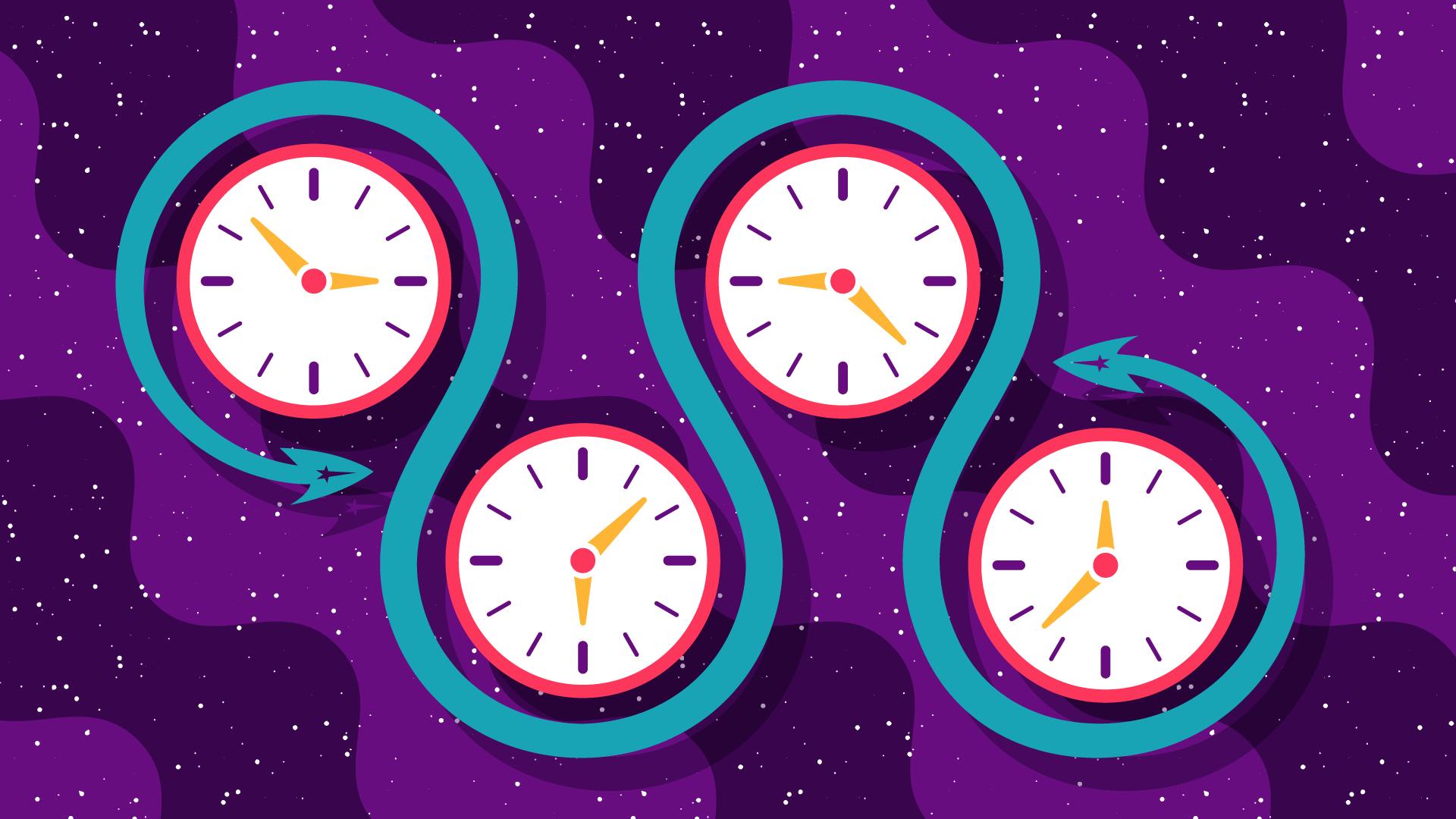
StarTrek.com
In the Star Trek: Discovery Season 5 episode, " Face the Strange ," Captain Burnham and Commander Rayner find themselves both stuck in a loop, but also, jumping all around the timeline of the titular starship. From the point before the U.S.S. Discovery was launched, to pivotal moments in Season 4, Season 3, Season 2 and even very early in Season 1, Rayner notes at one point that, "We’ve gone back in time to when you went forward to the future. That’s a little confusing."
Throughout all of Star Trek 's history, time travel has been just as propulsive to the narratives as space travel. But, within the various time travel stories of Trek , there is a special kind of time-skipping episode — the time loop story. Discovery has recently shaken-up this formula with "Face the Strange," but many elements of this episode pay homage to a proud Star Trek tradition. Here’s the history of the best time loop, and time-jumping episodes across the entire Final Frontier.
" Cause and Effect ," Star Trek: The Next Generation (Season 5, Episode 18)
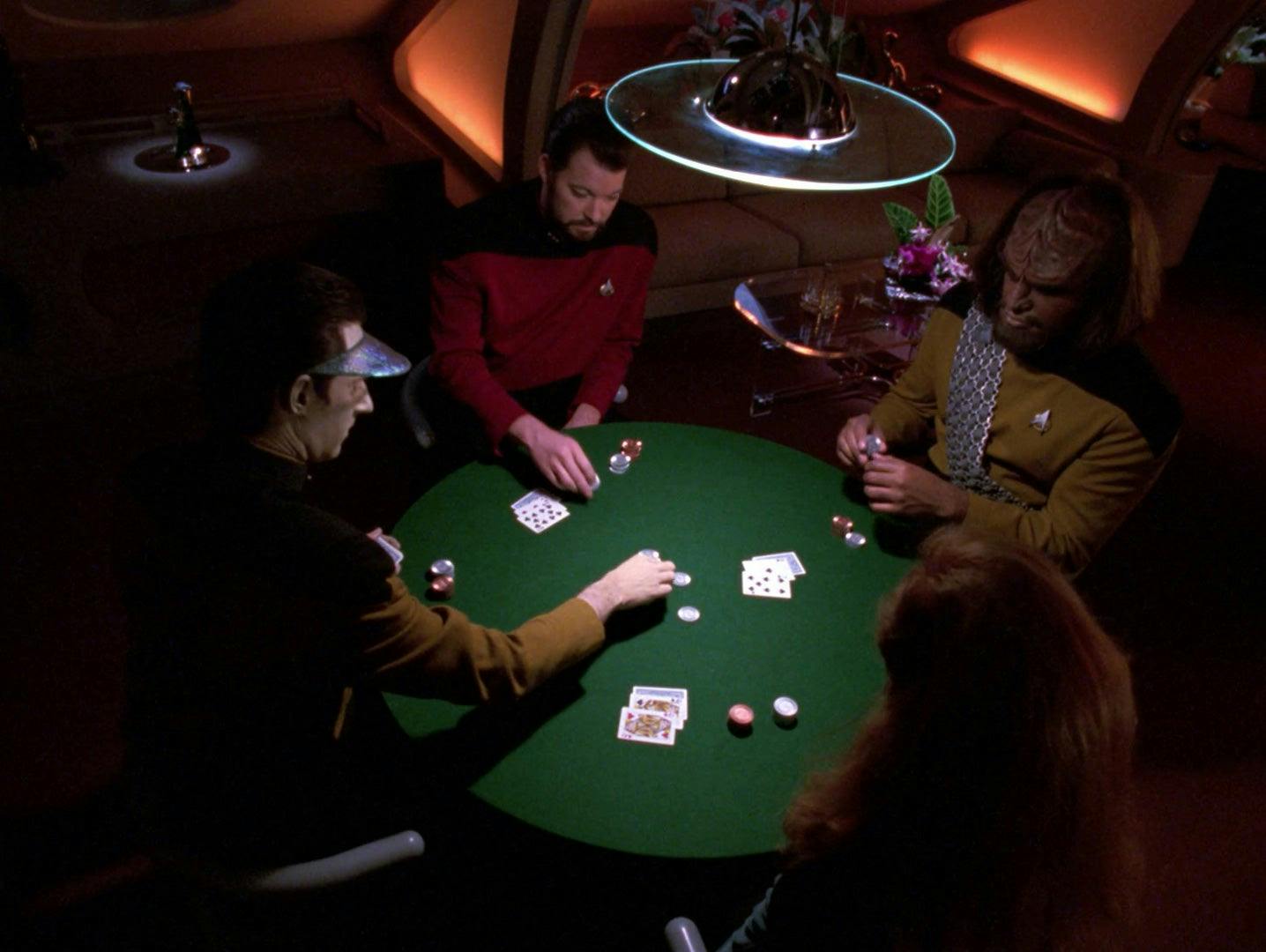
"Cause and Effect"
Perhaps one of the greatest science fiction episodes of all time, The Next Generation set the gold-standard for how to do time loop episodes.
When the Enterprise collides with another starship in the first scene, this episode poses one question right off the bat: What happens after you blow up the ship — and everyone on it — before the credits roll? The answer is mostly connected to whether or not we can even remember when we're stuck in a loop. Without actually spoiling this classic episode, let's just say thank the stars for Dr. Crusher and Data.
The brilliance of "Cause and Effect" cannot be overstated, but the 21st Century legacy of this episode is utterly appropriate. When Geordi reveals how the time loop works, Riker says, "You mean we could have come into this room, sat at this table and had this conversation a dozen times already?" This scene has become a popular meme format across various social media platforms, satirizing the time loop of some aspects of the internet experience.
" Parallels ," Star Trek: The Next Generation (Season 7, Episode 11)
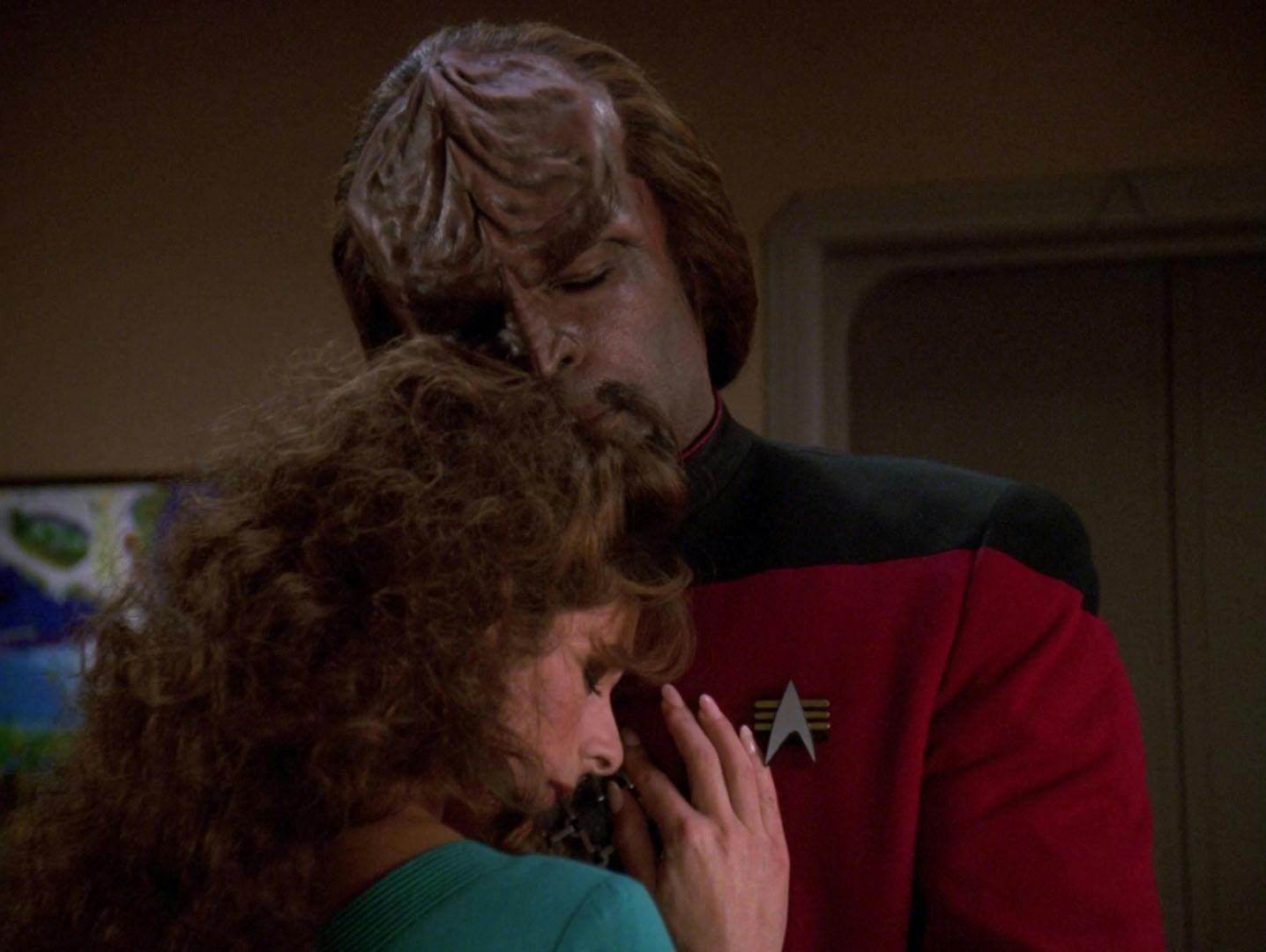
"Parallels"
Arguably, when Worf starts slipping between realities in "Parallels," the story is more focused on other dimensions, rather than a true time loop. But, each time he pops into a new reality, Worf does tend to reply to his own personal log, which is what began the episode.
Obviously, in each new timeline, Worf's personal log is different, and because he checks it so often in the episode, this gives "Parallels" the feeling of a time loop story, even though Worf is technically moving both forward in time, and also, side-to-side.
On top of all of this, "Parallels" feels time-loopy because so many ideas and plot points from previous seasons of The Next Generation are revisited here. From references to " The Best of Both Worlds ," to the return of Wesley Crusher, "Parallels" brings all the good things of TNG back around again for another look, from a different point of view.
" All Good Things... ," Star Trek: The Next Generation (Season 7, Episode 25)
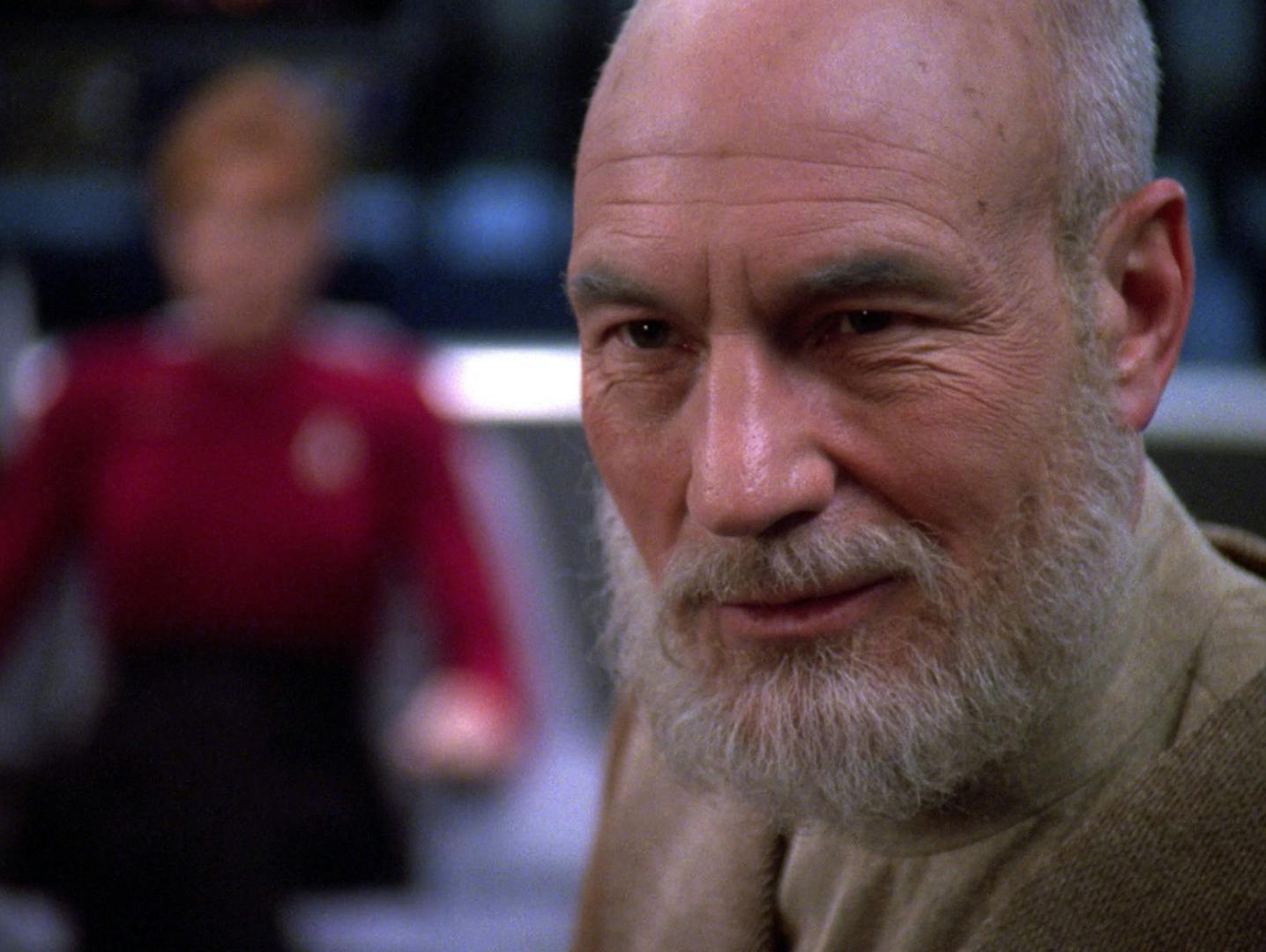
"All Good Things..."
Speaking of the best of The Next Generation , the immortal series finale is, from a certain point of view, one big time loop. As Jean-Luc Picard shifts between past, present, and future, the biggest mystery of "All Good Things…" is what caused the anomaly in the Devron system? Eventually, we learn that the ending and the beginning of this story are inextricably connected, a paradox that creates a kind of loop that must be broken.
Twenty-nine years later, in the Star Trek: Picard episode, " Imposters ," Captain Liam Shaw references this moment, and notes that Picard and Riker have a "real chicken and egg thing going on." It doesn’t get any more time-loopy than that!
" Visionary ," Star Trek: Deep Space Nine (Season 3, Episode 17)
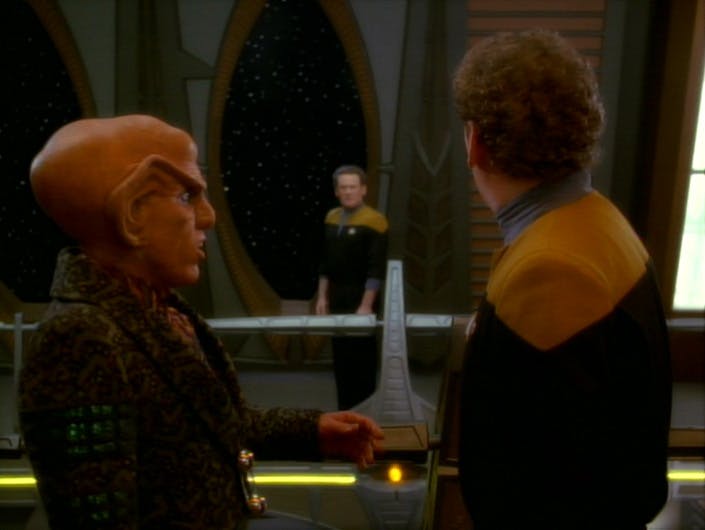
"Visionary"
When O'Brien starts seeing another version of himself appearing randomly throughout the station, Dr. Bashir briefly floats the idea that he's just having really boring hallucinations. But, as the episode goes on, it becomes clear that O'Brien is actually seeing brief moments in the future, and then, catching up to those moments in the present.
"Visionary" messes with what we expect from a time loop episode, because in all instances of future occurrences, there are literally two O'Briens present, and, when the past O'Brien catches up to the future moment, the duplication effect happens again, creating a kind of visual loop for the audience. The funny thing is, in several instances, the future doesn't play out exactly the way past O'Brien saw the first time, making this one of the wobblier time loops in all of Star Trek .
" Relativity ," Star Trek: Voyager (Season 5, Episode 24)
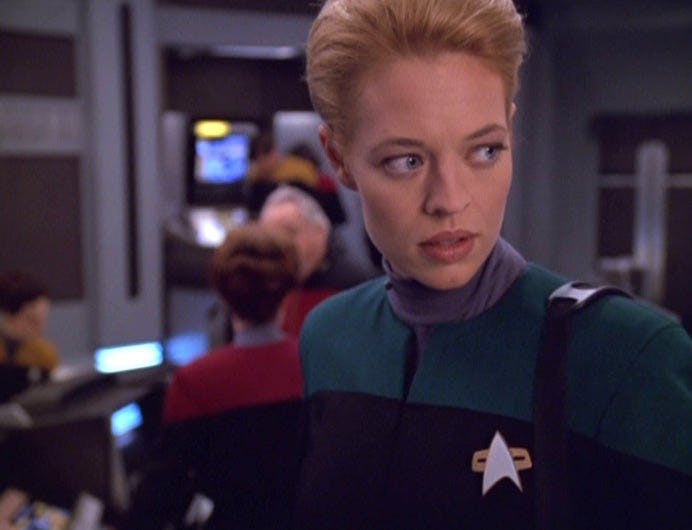
"Relativity"
In a move very similar to Discovery 's "Face the Strange," this unforgettable episode of Voyager briefly takes us back to a point before the series even begins, showing us Janeway's first moments on Voyager before the ship left the Utopia Planitia Shipyards on Mars. (In "Face the Strange," Burnham and Rayner see Discovery in a drydock on Earth well before the events of Season 1.)
But, Voyager 's jaunt into its own prehistory is just the beginning of a very specific type of time jumping episode. Here, Seven of Nine isn't exactly repeating a loop, but, making several attempts at different times, to prevent a bomb from destroying Voyager . As Tuvok aptly puts it when encountering one version of Seven from the future, "Like many time paradoxes, it's improbable, but not necessarily illogical." Because this episode features multiple versions of Seven, and leaps to various eras of Voyager , it pairs very nicely with Burnham and Rayner's similar jumps in "Face the Strange." Especially the moment where Seven meets herself.
" Shattered ," Star Trek: Voyager (Season 7, Episode 11)
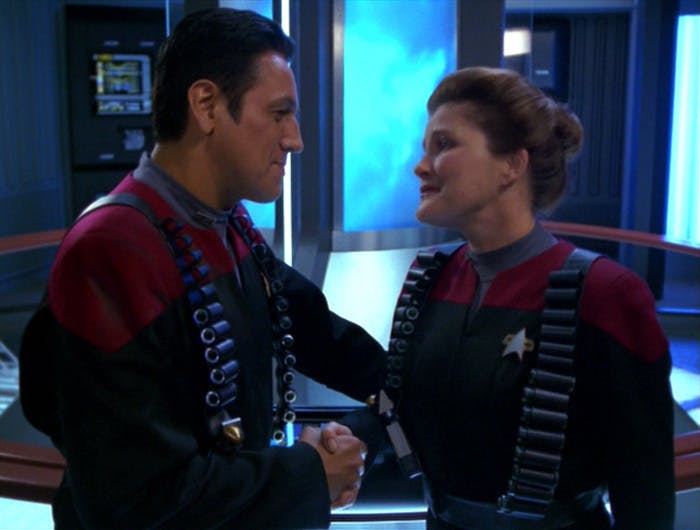
"Shattered"
Does Voyager have the best timey-wimey episodes in all of the Trek franchise? It's hard to say, but if there's another Trek episode that feels like an older sibling of Discovery 's "Face the Strange," it's almost certainly "Shattered," a fan-favorite episode from Voyager 's final season. Here, the captain and the first officer — Janeway and Chakotay — find themselves on a version of the ship that has been split into different time periods.
"Shattered" is one of Star Trek 's greatest retrospective episodes, touching on moments across all of Voyager 's story, and teaming past versions of characters with ones closer to the present. It's a touching story, and, structurally, it's wonderfully homaged in Discovery .
" Magic to Make the Sanest Man Go Mad ," Star Trek: Discovery (Season 1, Episode 7)
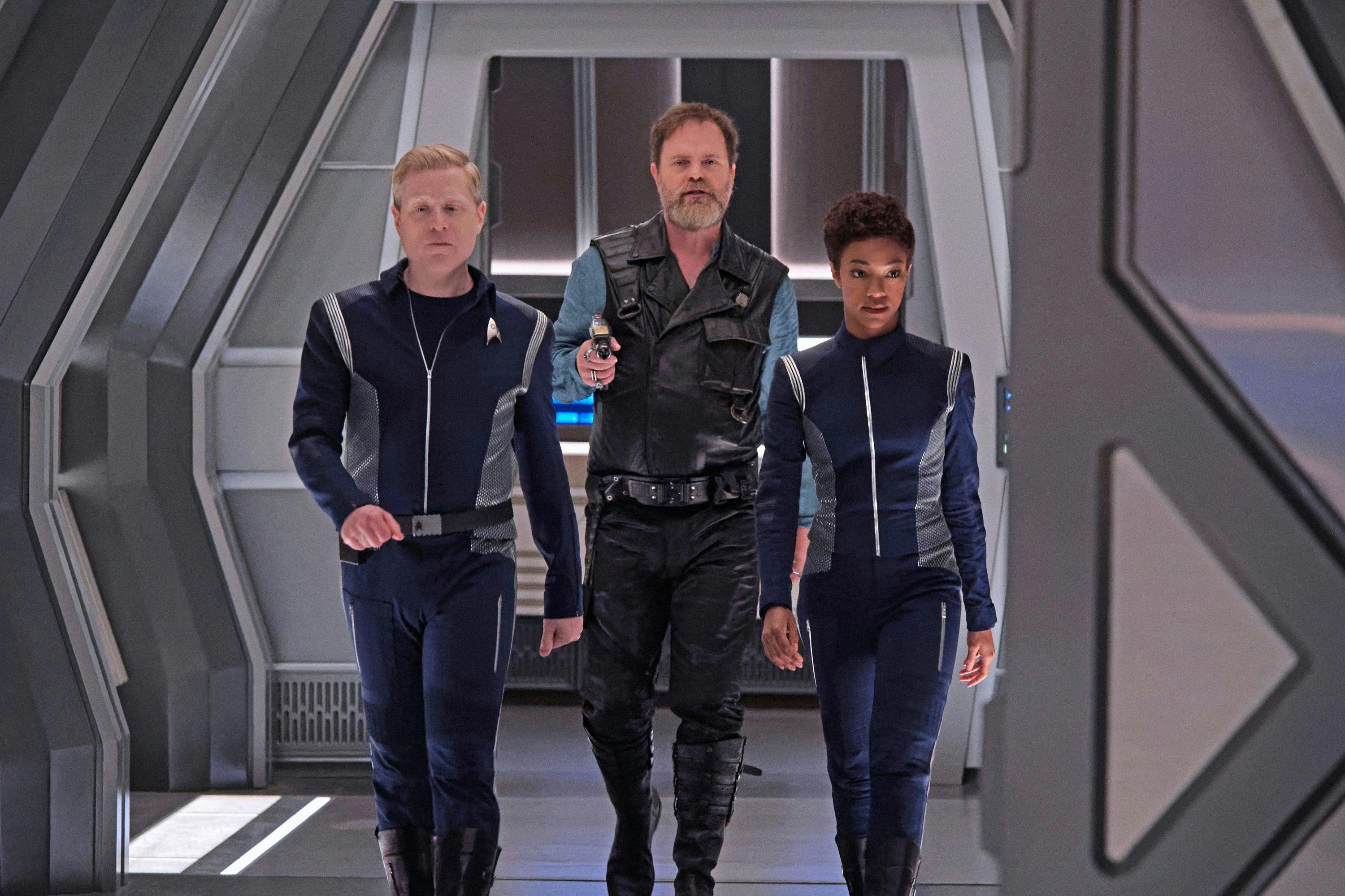
"Magic to Make the Sanest Man Go Mad"
One of Discovery 's stand-out moments from Season 1 fully set the stage for "Face the Strange" in Season 5. In "Magic to Make The Sanest Man Go Mad," Harry Mudd sets the ship on a true time loop, in which only Stamets can truly remember what is going on. Like in "Face the Strange," Stamets has a perception that exists outside of time, thanks to taking on the Tardigrade DNA in "Choose Your Pain."
This detail comes in handy in "Face the Strange," where Burnham and Stamets again have to re-team to get Discovery out of a time loop caused by nefarious enemies using time travel technology as a weapon. In Season 1, Burnham and Stamets barely knew each other, much like Burnham and Rayner's relationship in Season 5. But, if there's one thing a time loop or time-jumping episode can do, it’s make people who are just colleagues into best friends for life.
Get Updates By Email
Ryan Britt is the author of the nonfiction books Phasers on Stun! How the Making and Remaking of Star Trek Changed the World (2022), The Spice Must Flow: The Journey of Dune from Cult Novels to Visionary Sci-Fi Movies (2023), and the essay collection Luke Skywalker Can’t Read (2015). He is a longtime contributor to Star Trek.com and his writing regularly appears with Inverse, Den of Geek!, Esquire and elsewhere. He lives in Portland, Maine with his family.
Star Trek: Discovery Seasons 1-4 are streaming exclusively on Paramount+ in the U.S., the UK, Canada, Switzerland, South Korea, Latin America, Germany, France, Italy, Australia and Austria. Seasons 2 and 3 also are available on the Pluto TV “Star Trek” channel in Switzerland, Germany and Austria. The series streams on Super Drama in Japan, TVNZ in New Zealand, and SkyShowtime in Spain, Portugal, Poland, The Nordics, The Netherlands, and Central and Eastern Europe and also airs on Cosmote TV in Greece. The series is distributed by Paramount Global Content Distribution.
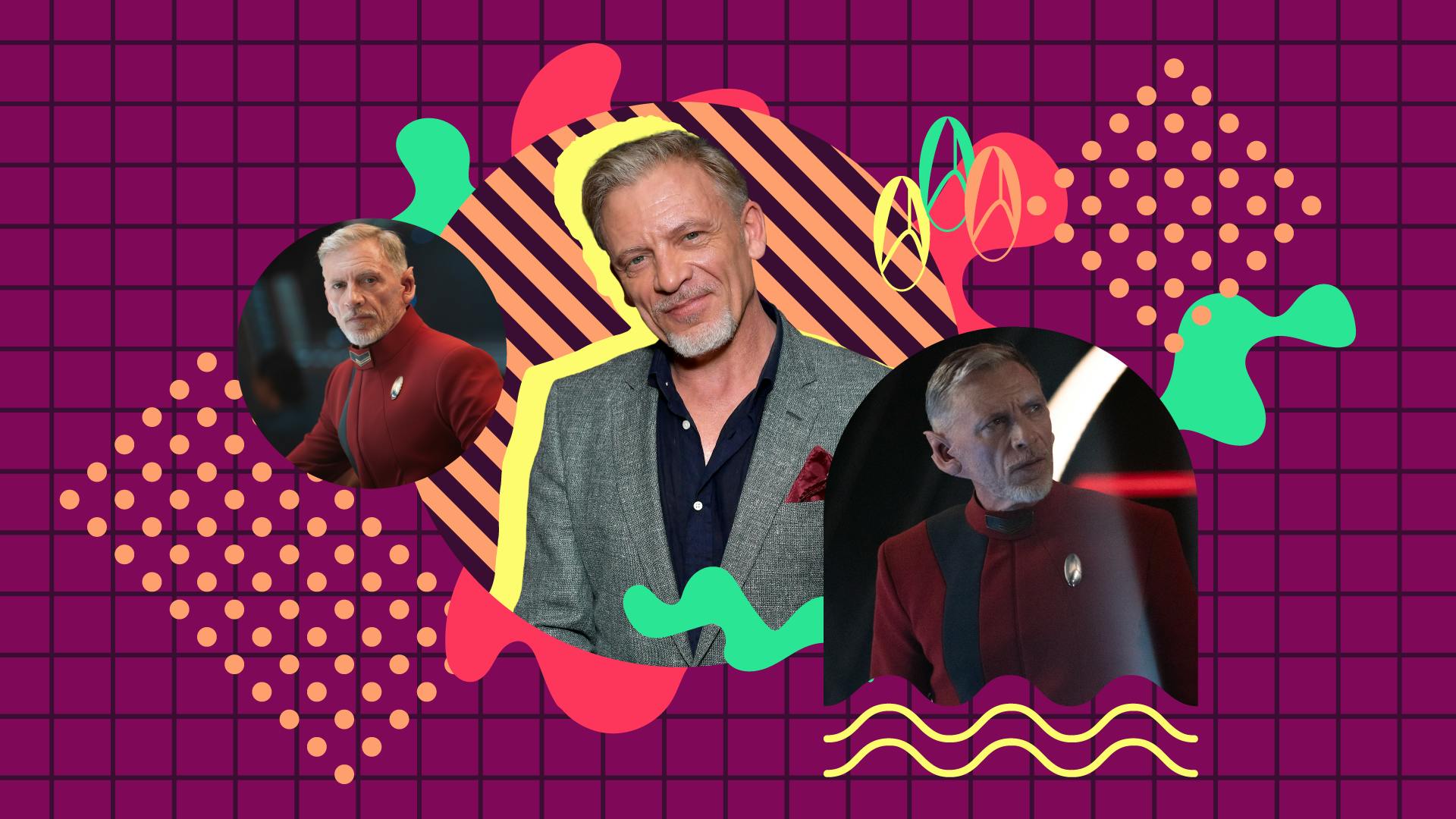
10 Real World Star Trek Locations You Can Visit
Because going back to the Grand Canyon really would be crazy.
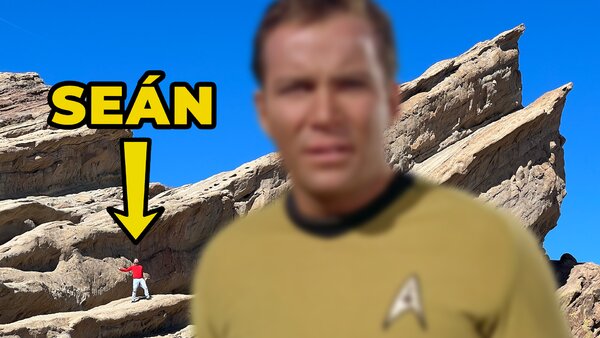
10. The Santa Monica Pier
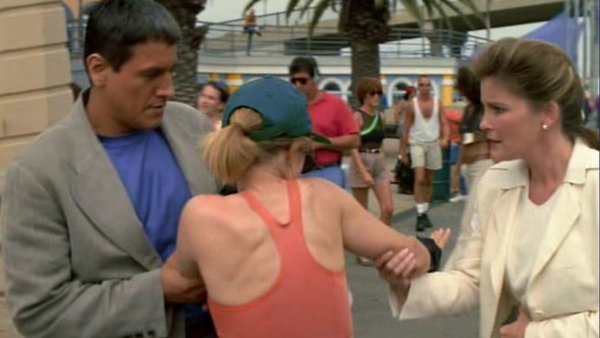
Jack Kiely is a writer with a PhD in French and almost certainly an unhealthy obsession with Star Trek.

COMMENTS
BRG -лучший выбор http://startrek.bestrealglobal.com/store/lo36/22/120345.jpg
Inside the heartbreaking conservatorship battle of a 'Star Trek' legend. Aug. 15, 2021. That "Star Trek," which originally ran from from 1966 to 1969, returned to television in the first ...
A star best known in the Star Trek universe as the site of a fierce battle in which a multitude of "Star Trek: Next Generation" ships are defeated by the Borg ("Best of Both Worlds"). But Wolf 359 is a real star, one of the closest to Earth at a distance of 7.8 light-years.
Interestingly, the most recent entry in the franchise came out on top. Star Trek: Strange New Worlds — led by Anson Mount as Captain Christopher Pike, Rebecca Romijn as Number One, and Ethan Peck as Science Officer Spock — boasts two Certified Fresh seasons at 99% and 97% on the Tomatometer. Not too bad for the youngster of a franchise ...
Throughout its three-parts — "The Forge," " Awakening ," and " Kir'Shara " — Star Trek not only redefined the Vulcans as we know them, but also set the stage for a huge Vulcan comeback in Star Trek: Discovery. The secret to doing this was simply making Vulcan culture seem real and, importantly, flawed. The knowledge that the ...
The Enemy Within. "The Original Series" — Season 1, Episode 5. The transporter — the cause of, and solution to, so many "Star Trek" problems — accidentally splits Capt. Kirk (William ...
Star Trek II: The Wrath of Khan (1982)87%. #4. Critics Consensus: Considered by many fans to be the best of the Star Trek movies, Khan features a strong plot, increased tension, and a sharp supporting performance from Ricardo Montalban. Synopsis: As Adm. James T. Kirk (William Shatner) and Capt. Spock (Leonard Nimoy) monitor trainees at ...
Star Trek: First Contact (1996) Released: November 22, 1996. Written by: Brannon Braga, Ronald D. Moore (screenplay by and story by) and Rick Berman (story by) Cast: Patrick Stewart, Jonathan ...
Is. Star Trek. 's Best World, Because It's the Real World. When Star Trek fans fight about the best Trek show, nine times out of 10 they're arguing about the original series versus The Next ...
(Photo by Paramount+/CBS) Star Trek TV Shows Ranked by Tomatometer. Updated: September 8, 2023. The Star Trek universe kicked off in 1966 with the original series, created by science fiction visionary Gene Roddenberry, and later exploded into a massive film and TV juggernaut.. While the original series, which starred William Shatner as Captain James T. Kirk and Leonard Nimoy as Mr. Spock, saw ...
It's time to evaluate each of the eleven series set in the Final Frontier from the past 55 years . Here's our ranking of every Star Trek series, from worst to best. 11. Star Trek: The Animated ...
Sign in only for partners of company : Forgot password? Login
StarTrek.com honors the luminary whose contributions saved the Star Trek universe. Read Now. Star Trek: Strange New Worlds Renewed for Fourth Season. News. Star Trek: Lower Decks to Conclude with Fifth and Final Season. News. Star Trek: Discovery's Final Adventure Begins in Two Weeks. News. The Star Trek Universe Beams into WonderCon 2024.
Deep Space Nine - IMDb Rating: 8.0. When Deep Space Nine premiered in 1993, it stood out as being the only Star Trek spin-off to take place entirely on a space station. The series took about two seasons to find its footing, and really picked up the narrative pace when it introduced the empire on the other end of the wormhole, the Dominion.
Star Trek: The Next Generation: Created by Gene Roddenberry. With Patrick Stewart, Jonathan Frakes, LeVar Burton, Marina Sirtis. Set almost 100 years after Captain Kirk's 5-year mission, a new generation of Starfleet officers sets off in the U.S.S. Enterprise-D on its own mission to go where no one has gone before.
Without further ado, here's our list of every Star Trek series ranked from worst to best. 01 of 11. 11. Star Trek: Picard (2020-2023) Nicole Wilder/Paramount+. Star Trek: Picard was meant to be ...
Star Trek's First Cliffhanger. Let's revisit what made 'The Best of Both Worlds' stand out when it first aired. By Jordan Hoffman. StarTrek.com. We're going to go back in time. We Star Trek fans can do that, you know. Nearly 30 summers ago, I was on my grandparents' farm. As was tradition, I would slink away for an hour and watch the TV in ...
9. Enterprise. Enterprise was dealt a bad hand because it came at a time when Star Trek was running out of steam, and the fact that it was a prequel didn't help either. The series is burdened with a bland crew, and out of all the Star Trek captains, Captain Archer is the most… dry.
Published September 8, 2016. On September 8, 1966, NBC aired the first episode of a new TV series about a starship on a five year mission of space exploration. Today, Star Trek turns 50. The first ...
9. Star Trek: Picard. Paramount. It personally hurts me to place "Picard" this low on the list, but two things weigh it down. The first is the reminder of the way this series is a hot potato among ...
In the Star Trek: Discovery Season 5 episode, "Face the Strange," Captain Burnham and Commander Rayner find themselves both stuck in a loop, but also, jumping all around the timeline of the titular starship.From the point before the U.S.S. Discovery was launched, to pivotal moments in Season 4, Season 3, Season 2 and even very early in Season 1, Rayner notes at one point that, "We've gone ...
Explore the places where Star Trek has filmed or referenced on screen as their real-world selves, from Santa Monica Pier to the Grand Canyon. Discover the history and trivia behind these iconic locations and how they appear in the show.